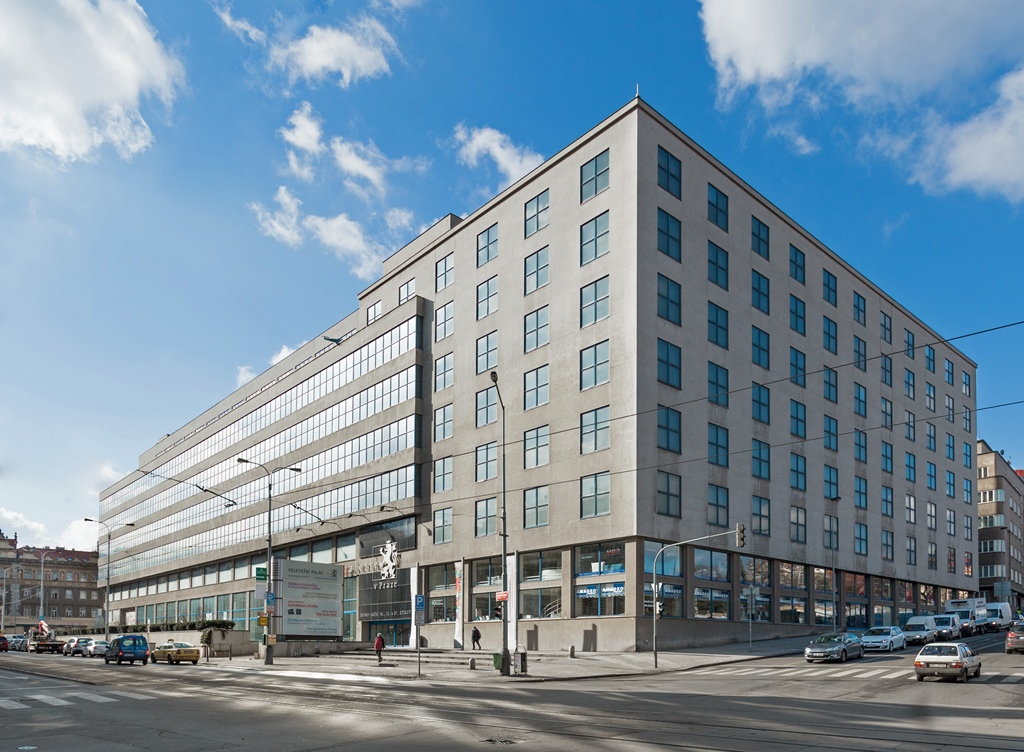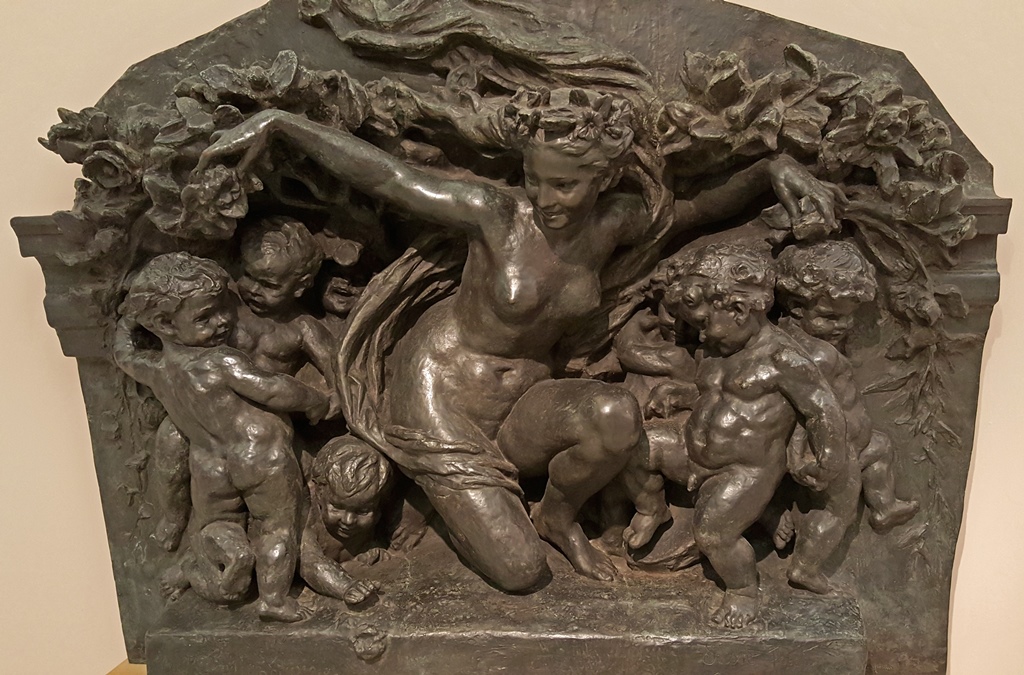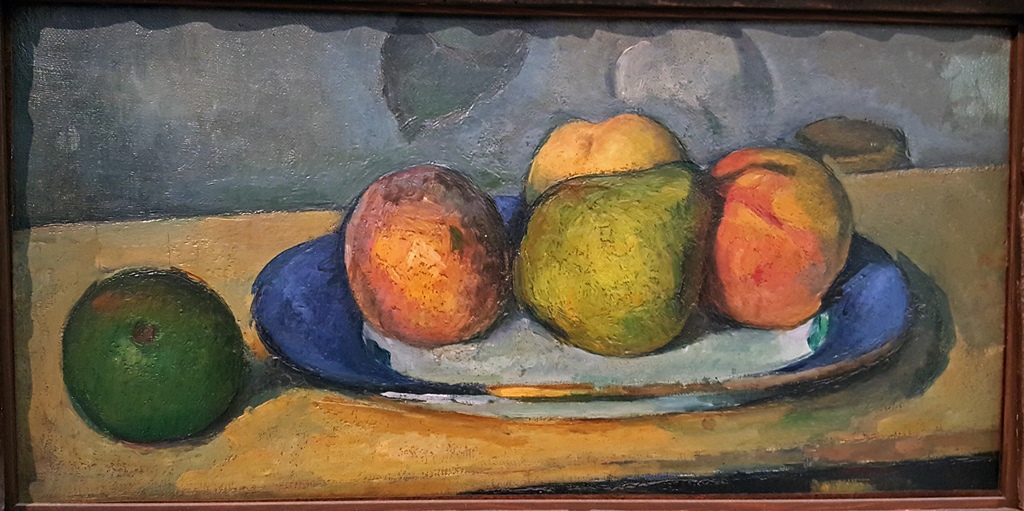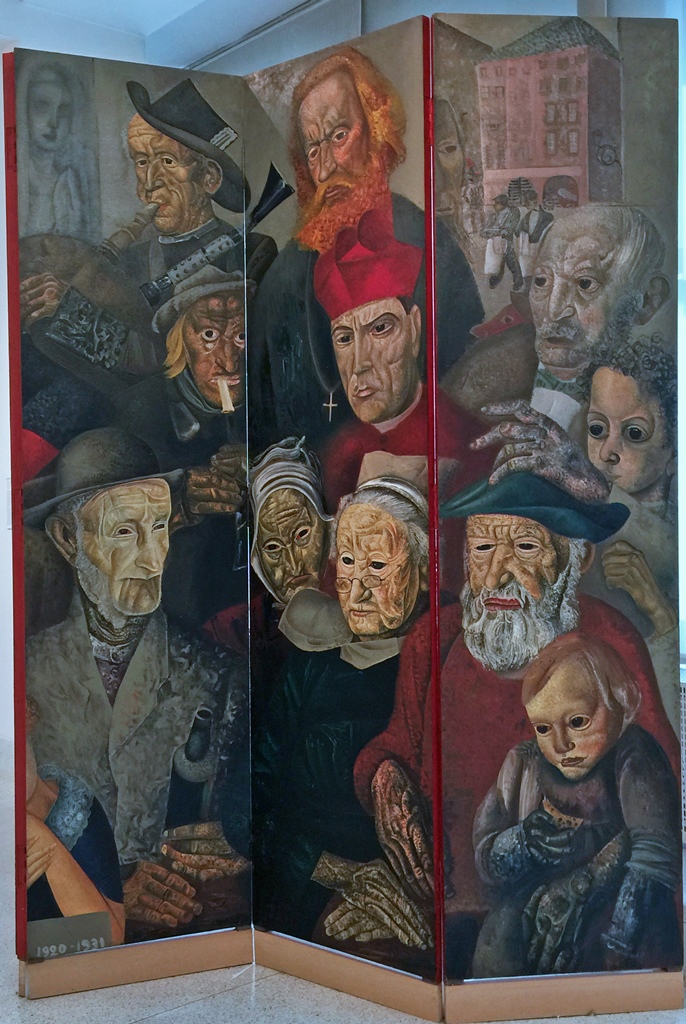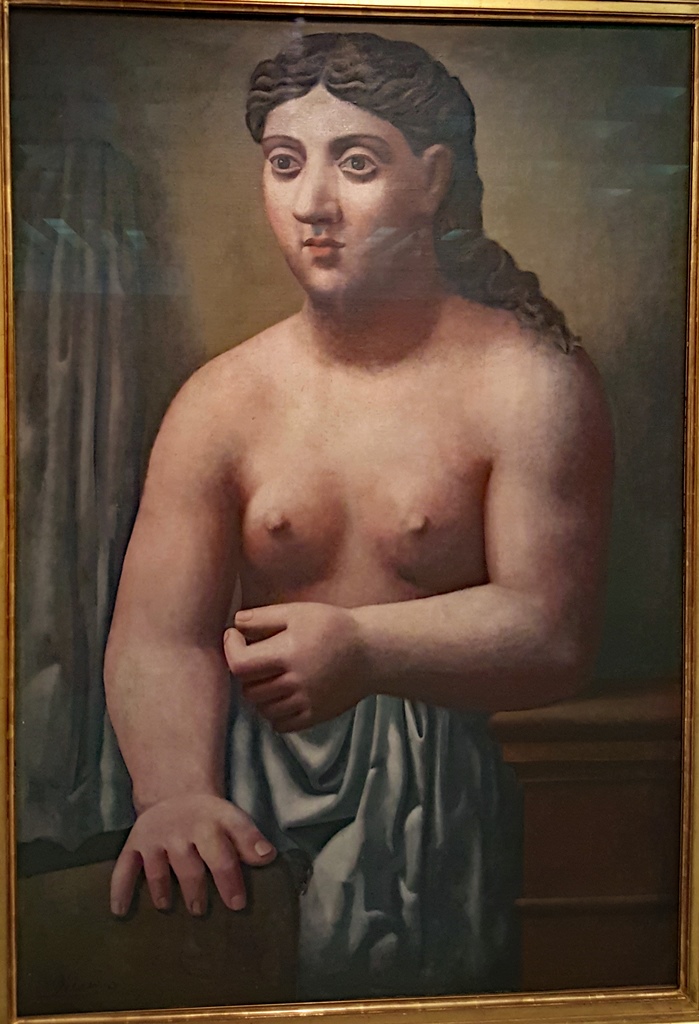Veletržní Palace
The Veletržní Palace is a building in northern Prague which is used by the Czech National
Gallery for a permanent exhibition of modern art. It was first built between 1925 and 1928 to
host trade fairs, a strategy used by the new Czechoslovak government to build a commercial
center for the new country (the word veletržní actually means “trade fair”). The first
trade fair was held in 1920, and it soon became apparent that additional space would be needed.
Plans were made to build three large commercial palaces, but only one was actually completed.
The palace was built in a new style known as Functionalism, the first building in Prague to
receive this treatment. If one were asked to describe the building in a single word, “palace”,
as in a residence for royalty, might not be the first word that jumps to mind. Personally, I
would think more in terms of “office building” (purists might complain that this is two words,
but in, say, German, this would be Bürogebäude; so there). The building is very
spacious, and was in fact the largest of its type in the world at the time it was built.
The building served its original purpose until 1948, though there was a break during the war
when the occupying Nazis used it as a gathering point for Jews awaiting deportation to
concentration camps. After the war, the building was used as an administration building until
1974, when it caught fire and was catastrophically burned up. Thought was given to demolishing
it, but it was eventually decided that it should be preserved, being gifted to the National
Gallery for rebuilding as an art gallery. The rebuilding was a long process, with the
reopening of the building not taking place until the end of 1995.
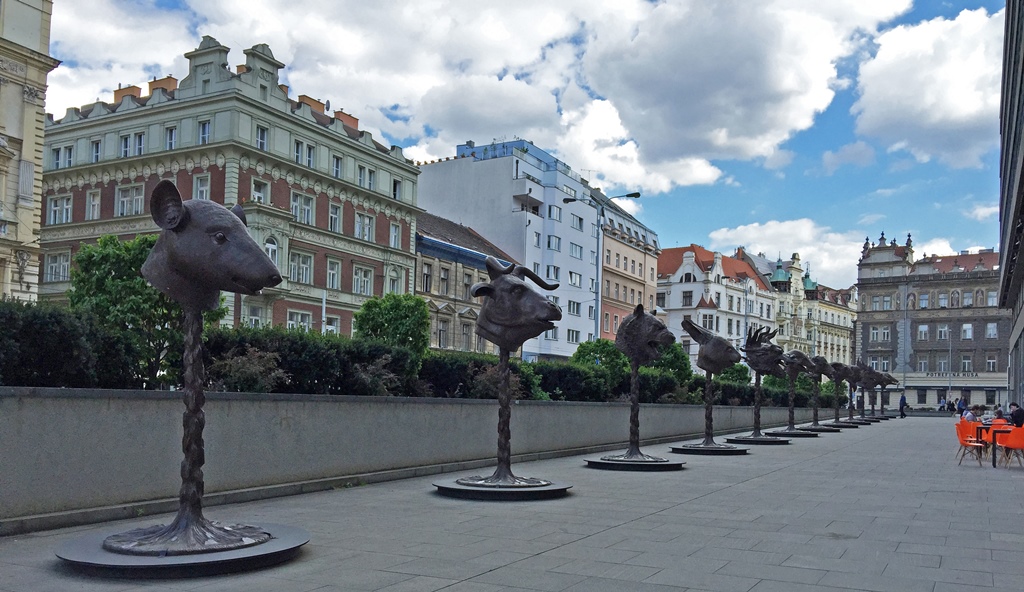
Animal Heads in Front of Museum
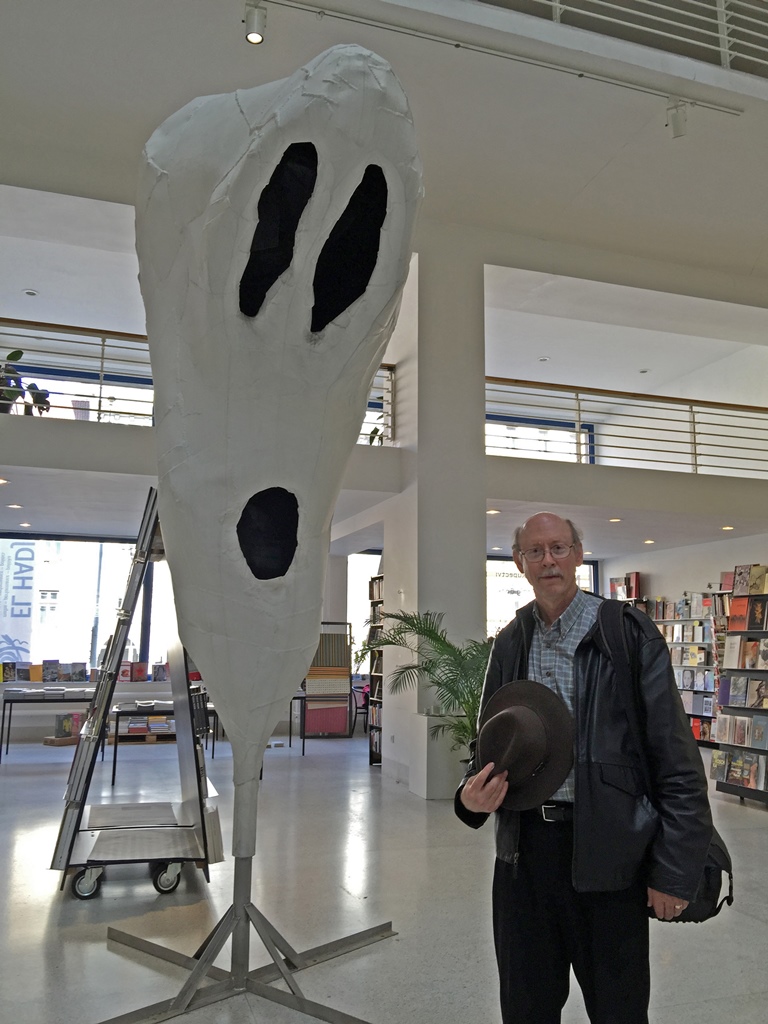
Bob and Artwork Near Palace Bookstore
The Veletržní Palace’s first art exhibition happened when it first opened, in 1928, with the
debut of Alphons Mucha’s Slav Epic (which would make a return visit from 2012-2016).
But the museum’s permanent collection consists of Czech and international modern art (“modern”
extending mainly from the late 19th to the early 20th Centuries). The 19th Century art mostly
seems to be French, beginning with Romantic Era works:
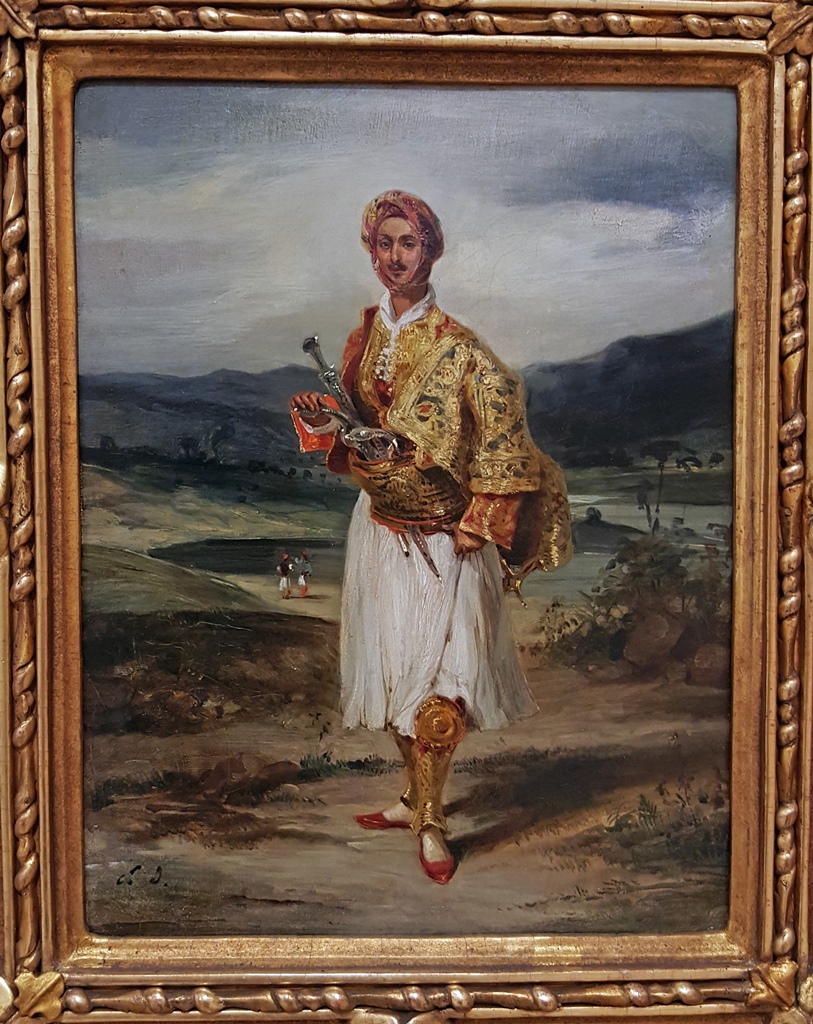
Count Palatiano in a Greek National Costume, Eugène Delacroix (1826)
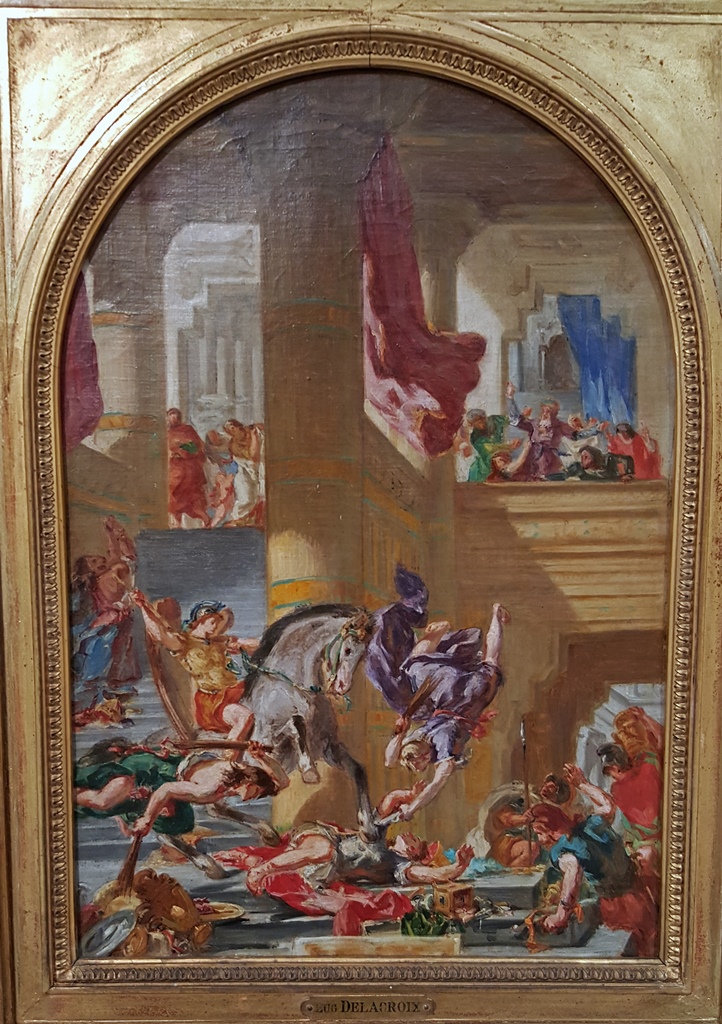
The Expulsion of Heliodorus from the Temple, Eugène Delacroix (ca. 1857)
The Triumph of Flora, Jean-Baptiste Carpeaux (1866)
Any museum exhibiting art from this time period would have to display some examples of
French Impressionism, and the Veletržní Palace is no exception:
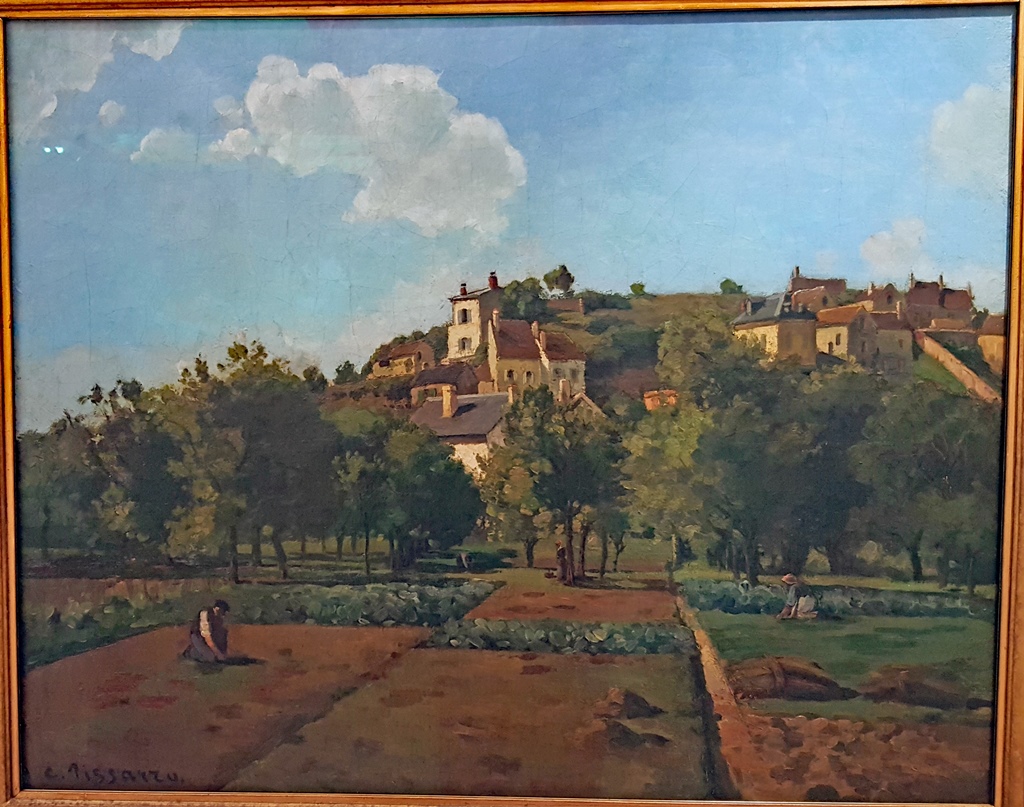
Pontoise, Camille Pissarro (1867)
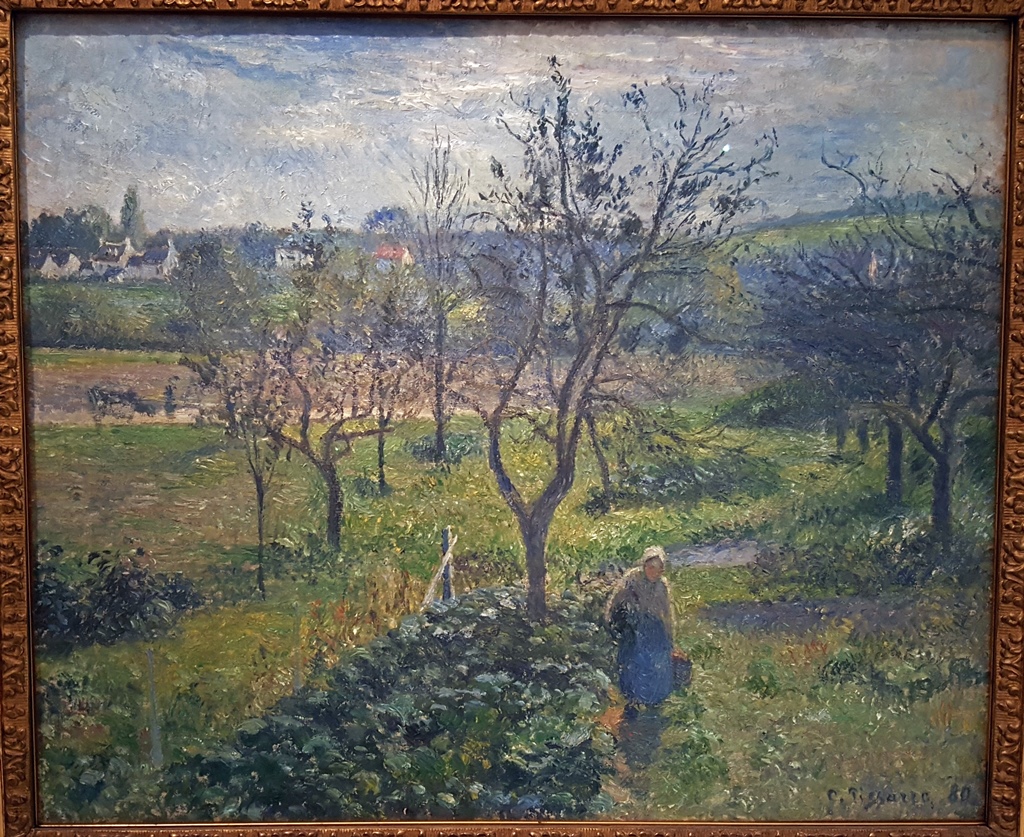
Garden at Val Hermeil, Camille Pissarro (1880)
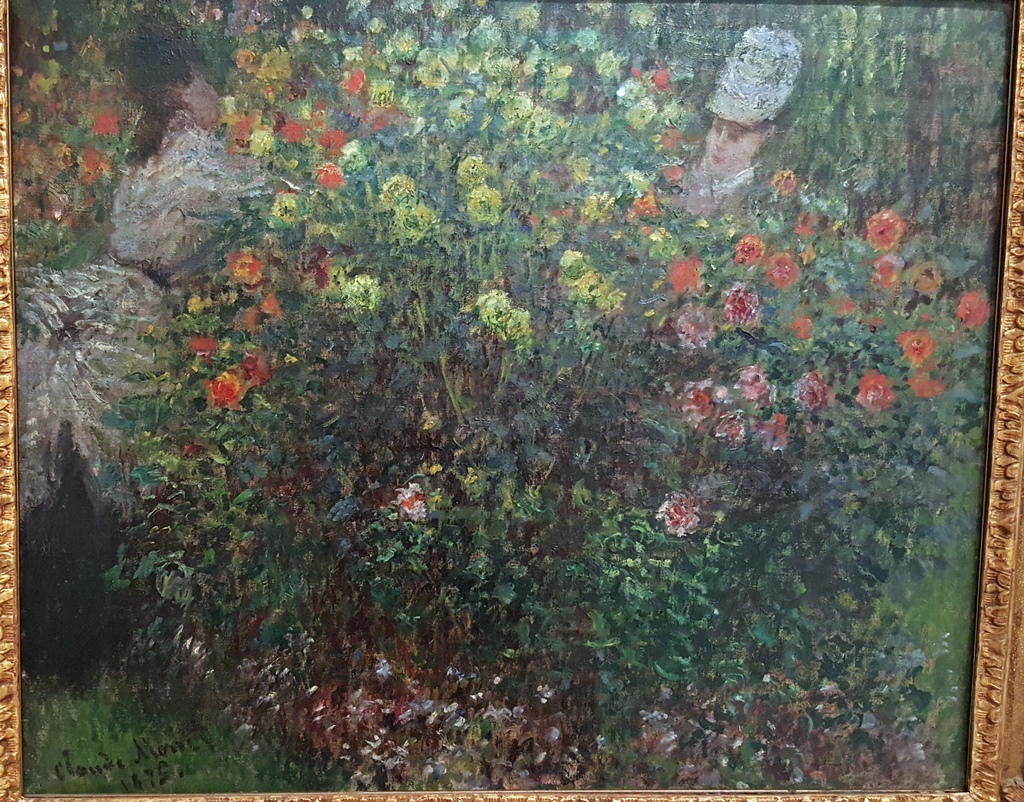
Two Women Among Flowers, Claude Monet (1875)
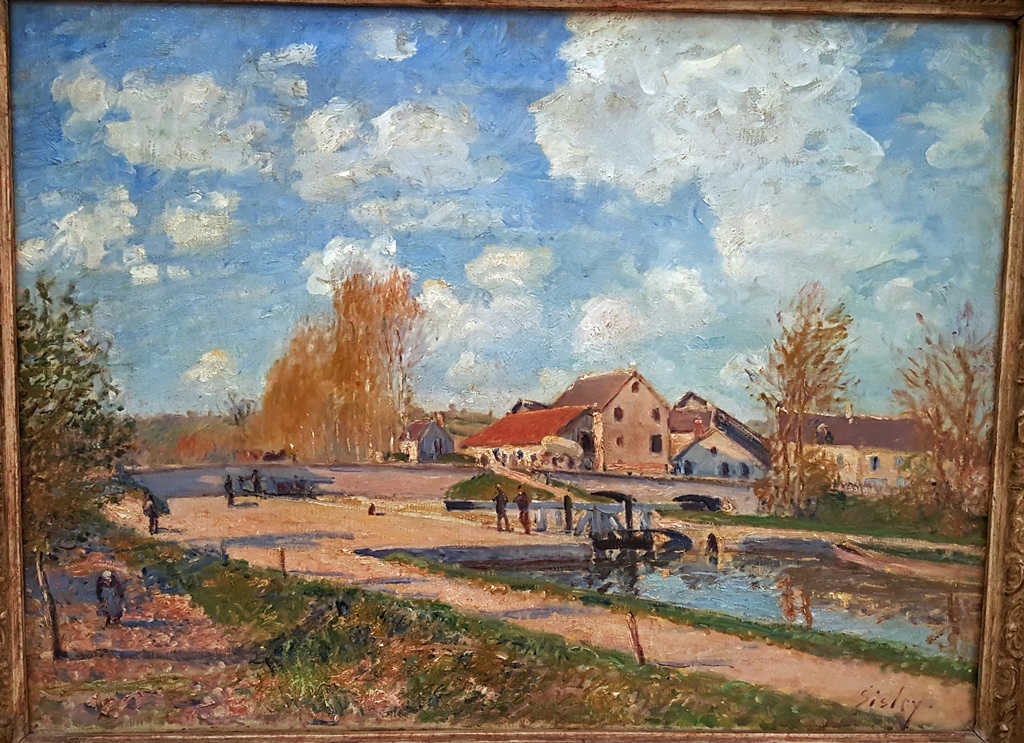
The Bourgogne Lock at Moret, Alfred Sisley (1882)
Fruit, Paul Cézanne (1875)
Ditto for Post-Impressionism:
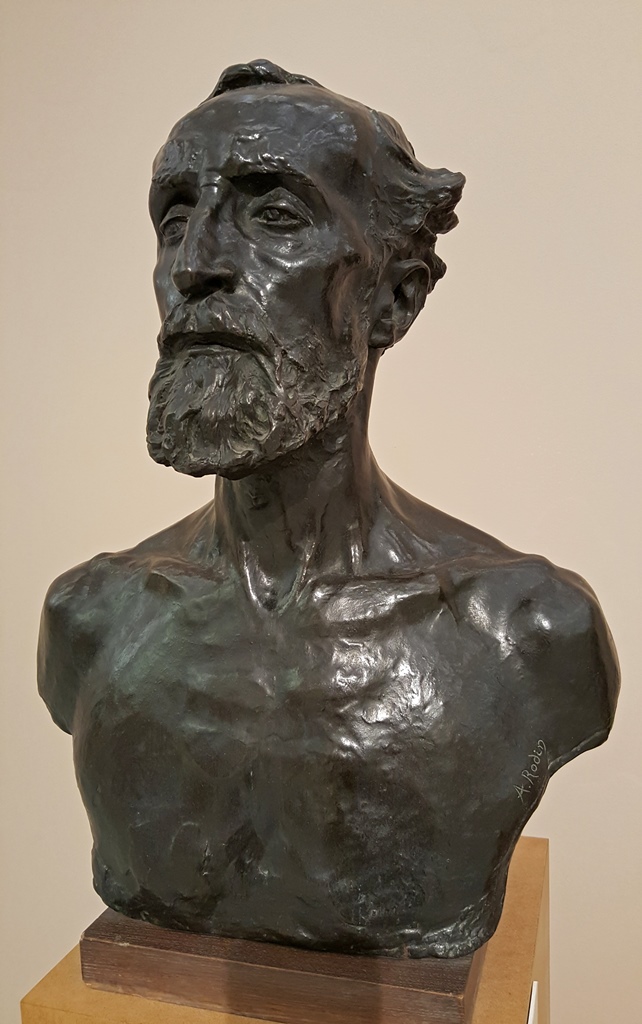
The Sculptor J. Dalou, Auguste Rodin (1883)
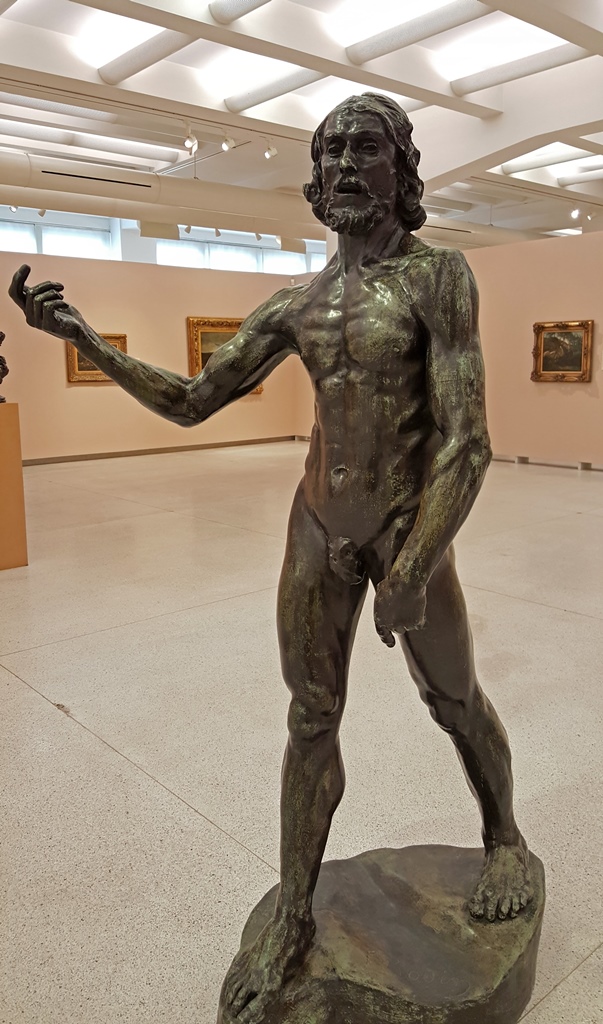
St. John the Baptist, Auguste Rodin (1878)
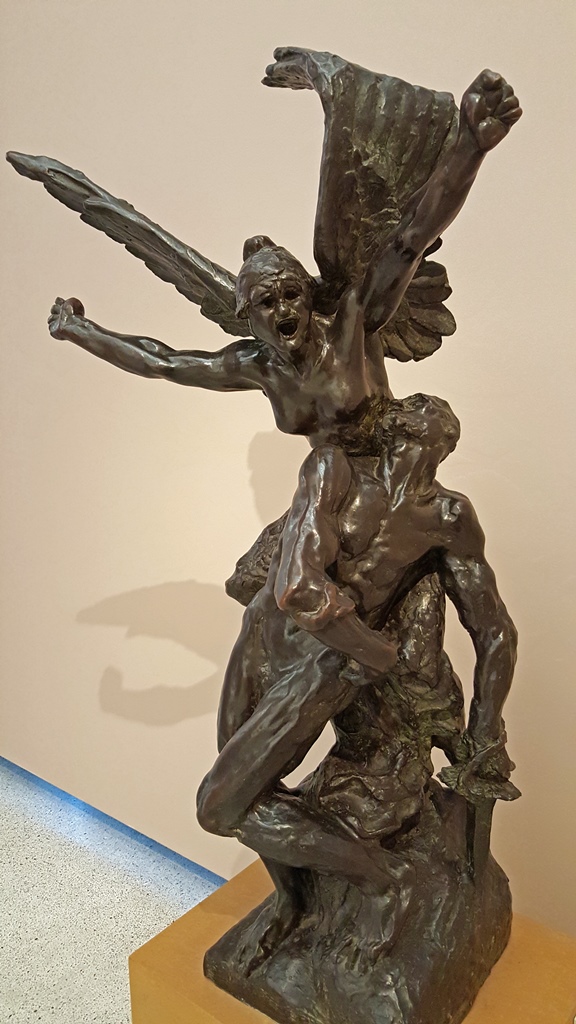
Defense, Auguste Rodin (1878)
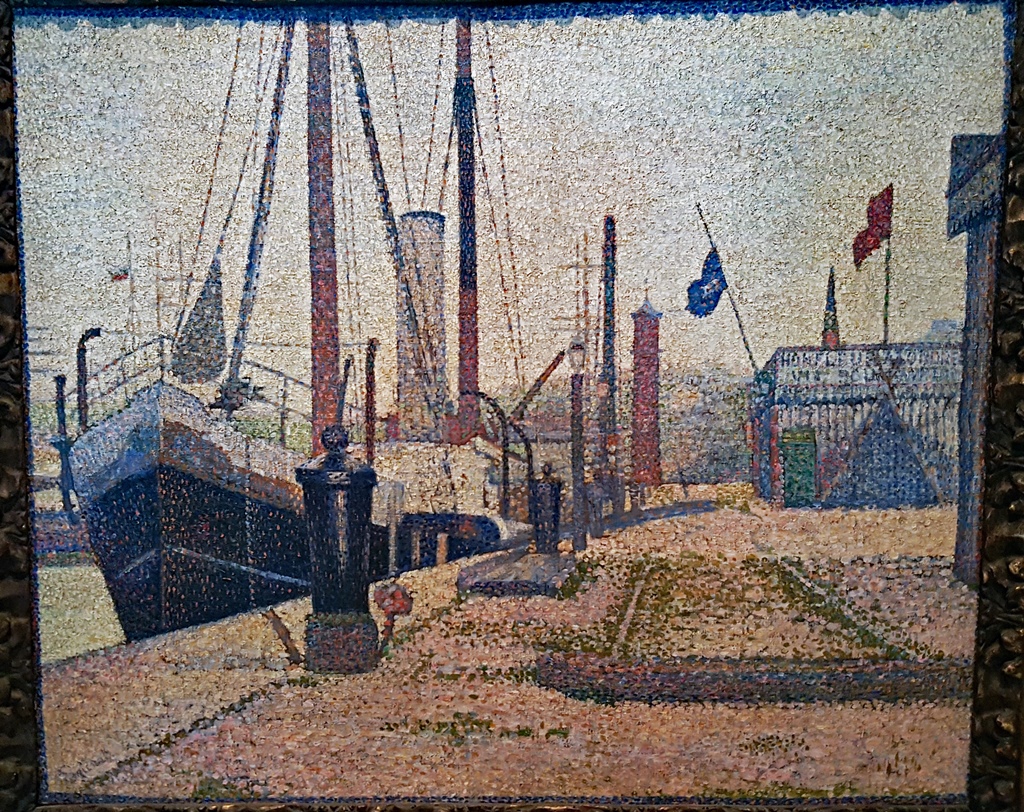
The "Maria" at Honfleur, Georges Seurat (1886)
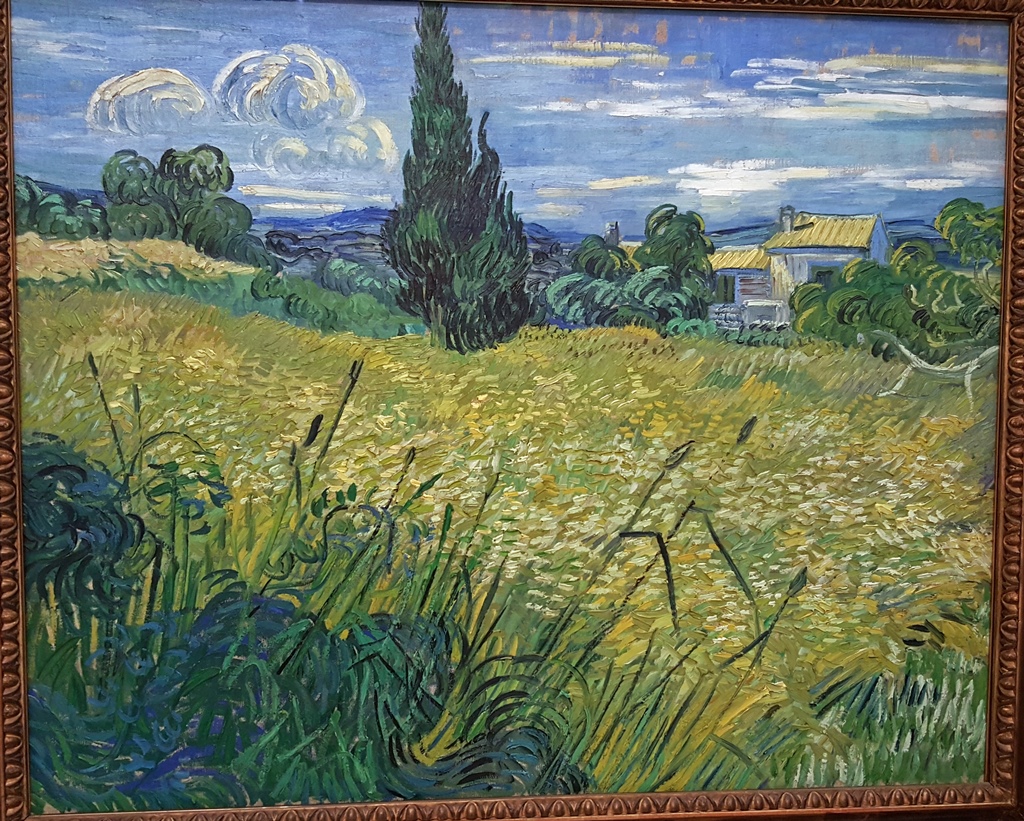
Green Corn, Vincent van Gogh (1889)
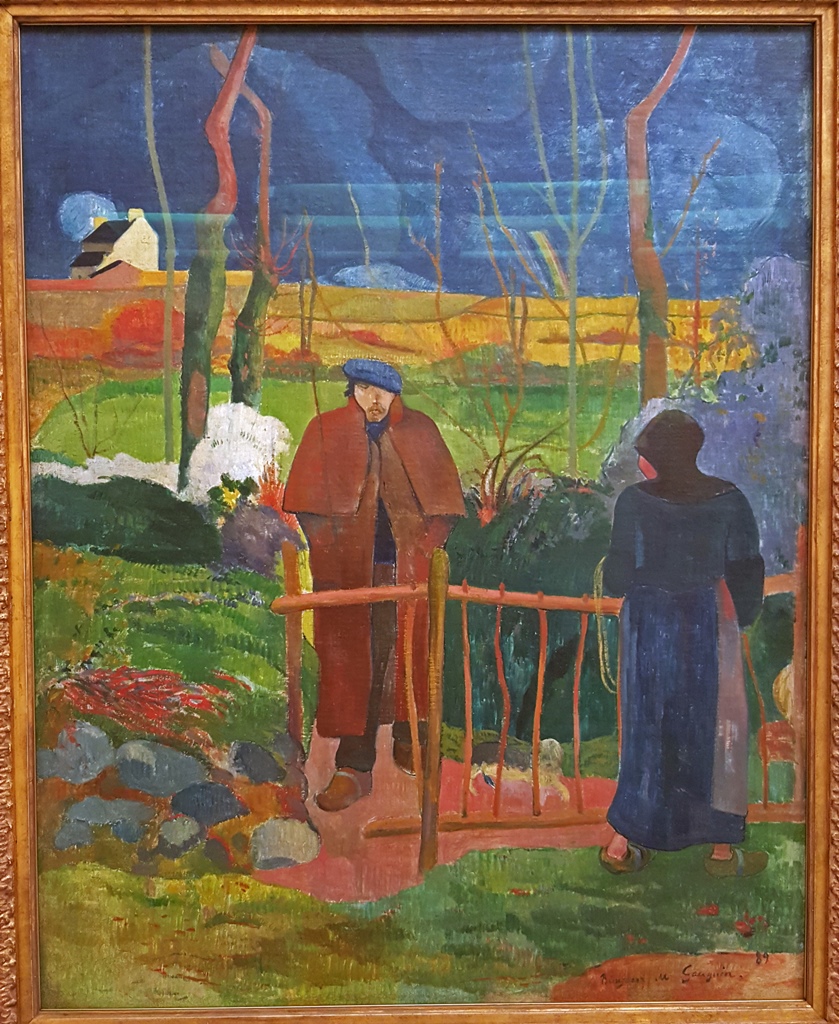
Bonjour, Monsieur Gauguin, Paul Gauguin (1889)
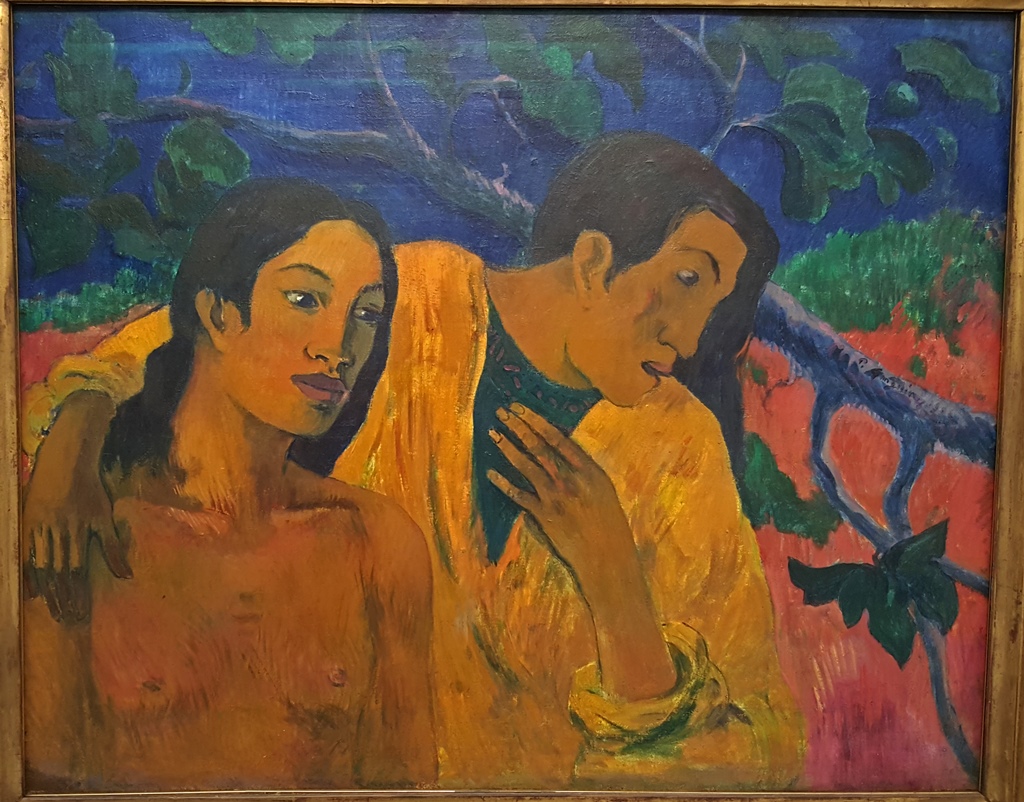
Flight (Tahiti Idyll), Paul Gauguin (1902)
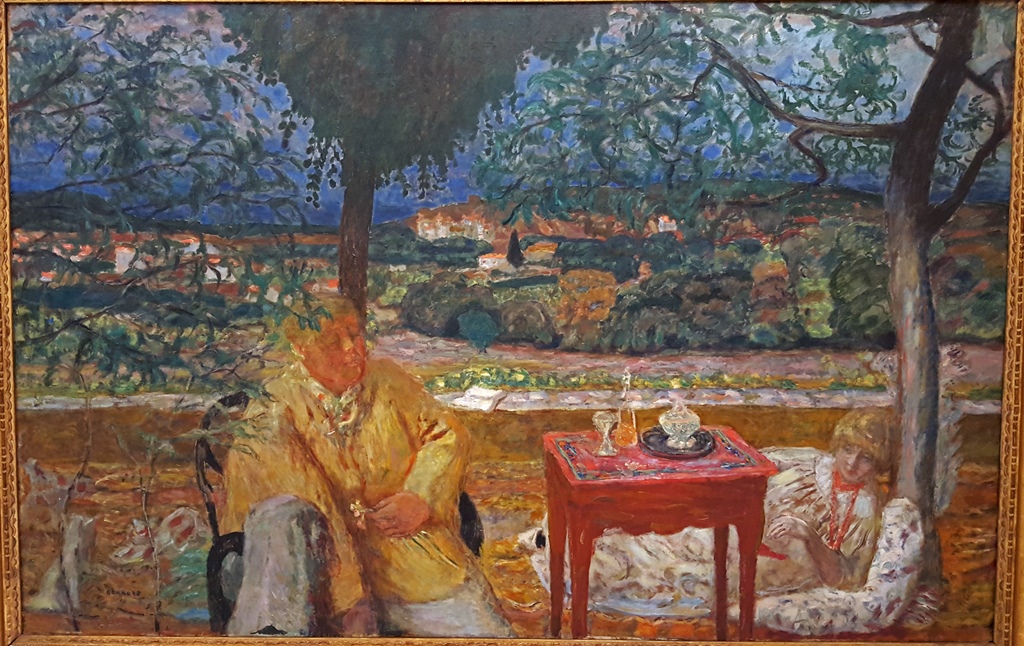
In the Garden (Conversation in Provence), Pierre Bonnard (1913-14)
And shortly after the turn of the century, artistic experimentation became rampant and
more international, with several new movements and sub-movements being born (Expressionism,
Fauvism, Cubism, etc.). Here’s some of what the Palace has to offer:
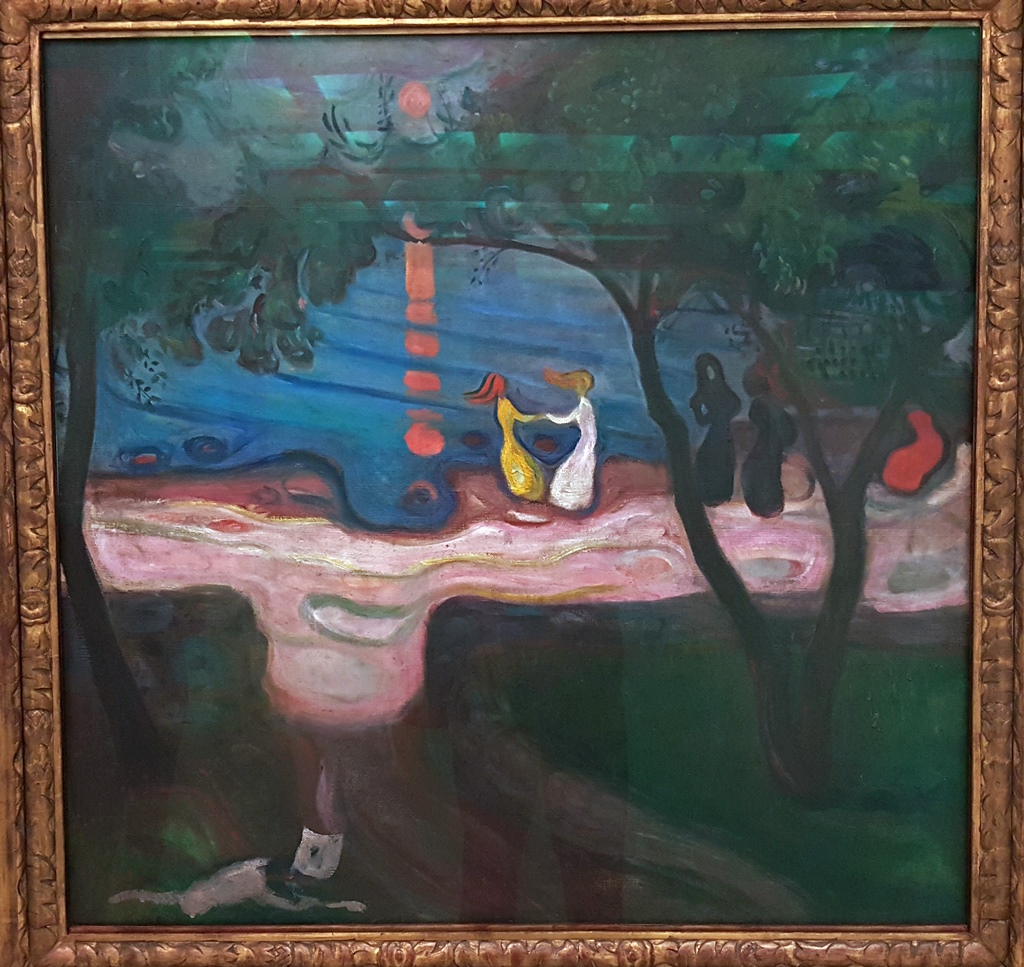
Dancing on a Shore, Edvard Munch (1900)
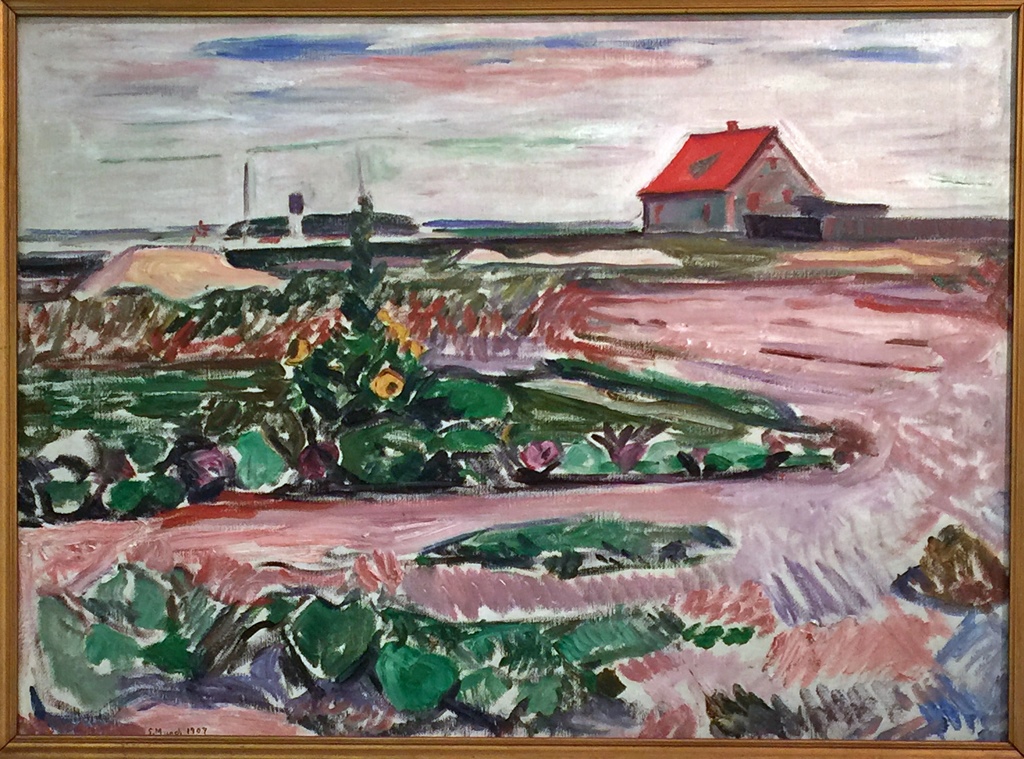
Sea-Shore Landscape Near Lübeck, Edvard Munch (1907)
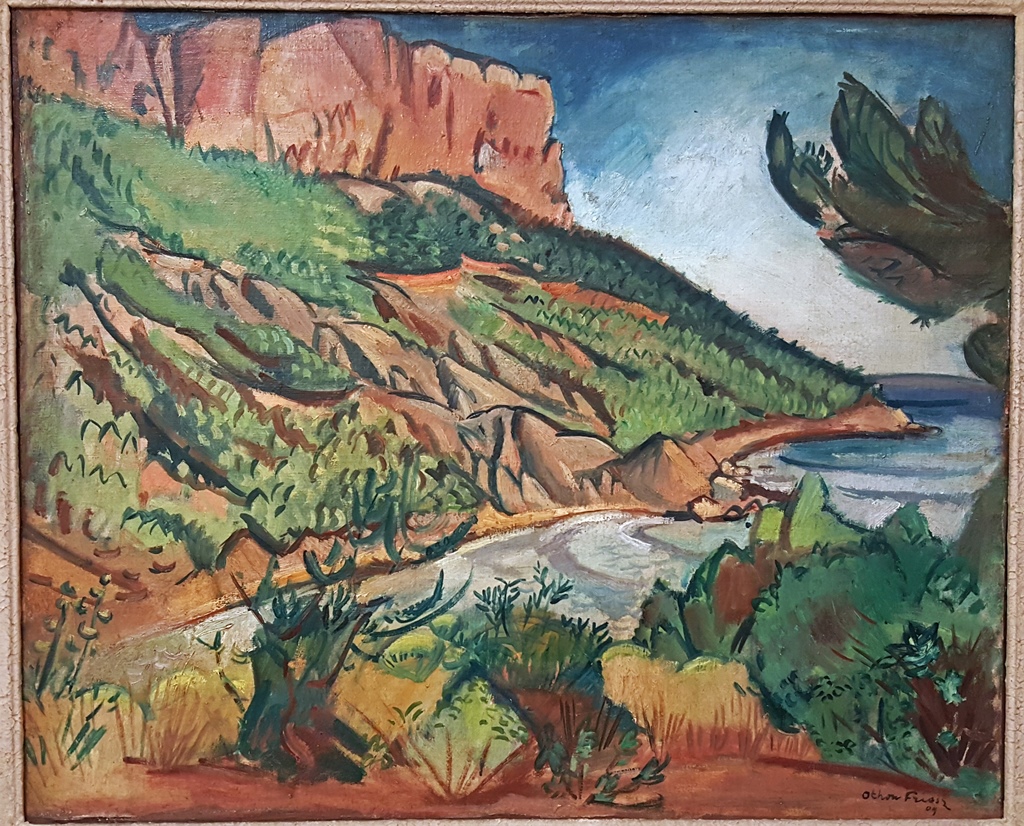
The Bay, Othon Friesz (1909)
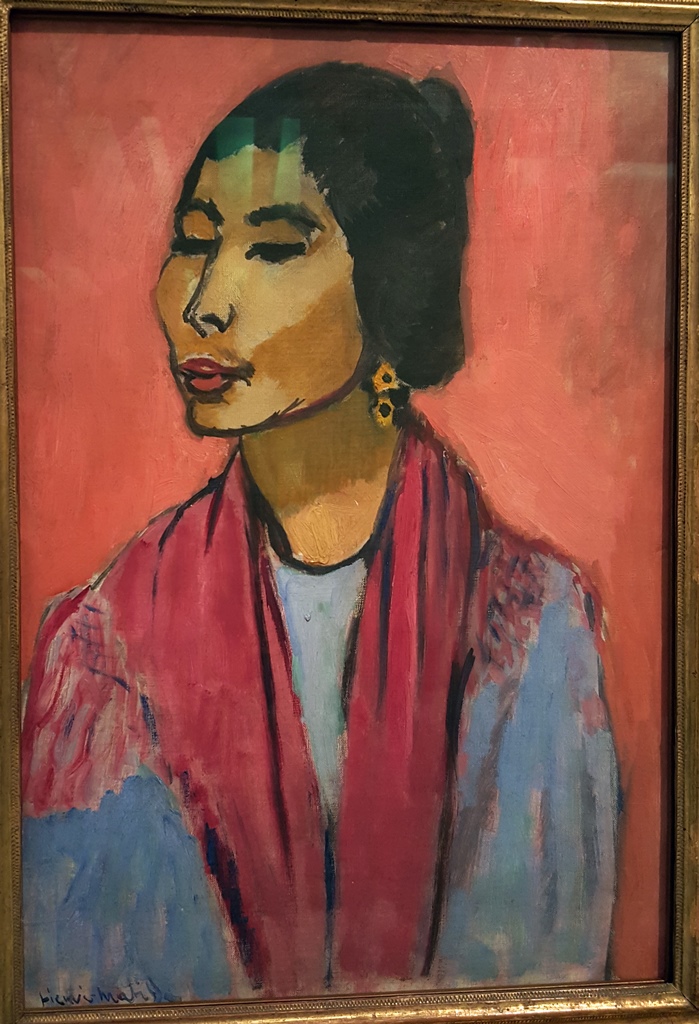
Joaquine, Henri Matisse (1910)
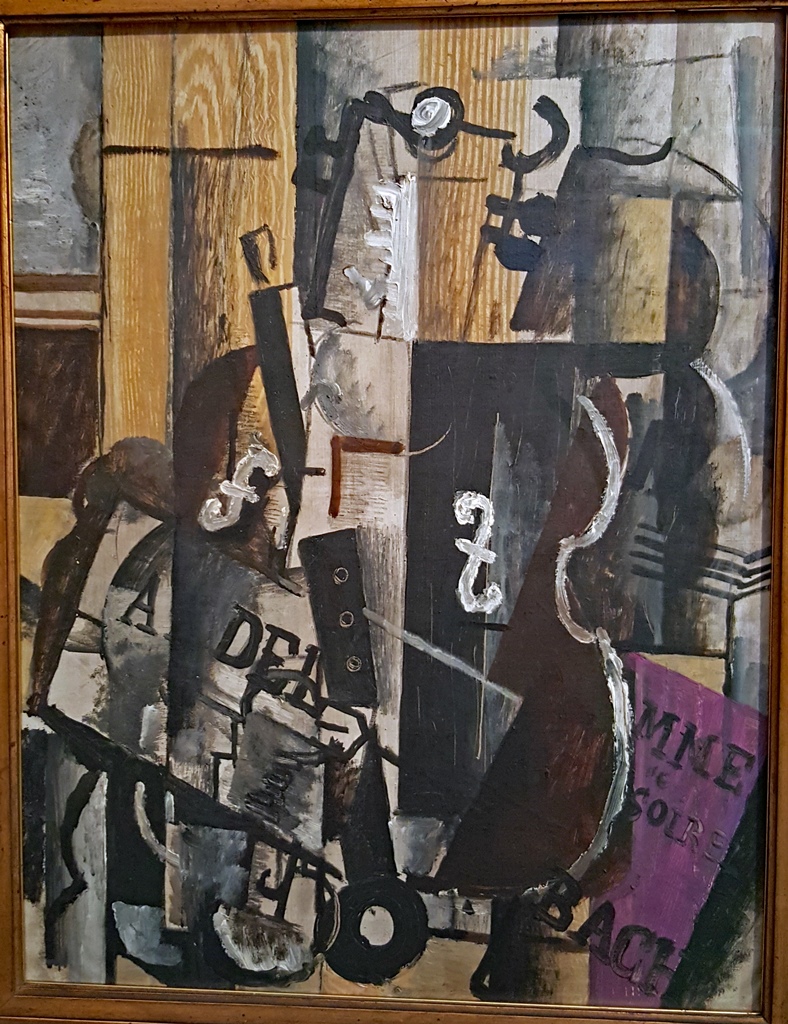
Violin and Clarinet, Georges Braque (1912)
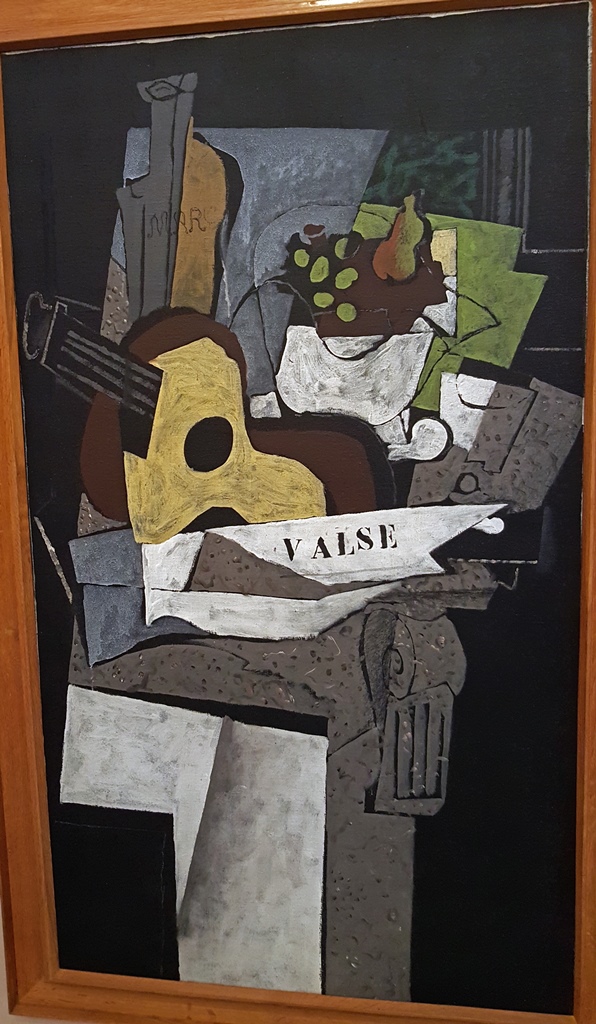
Still Life with Guitar I, Georges Braque (1920-21)
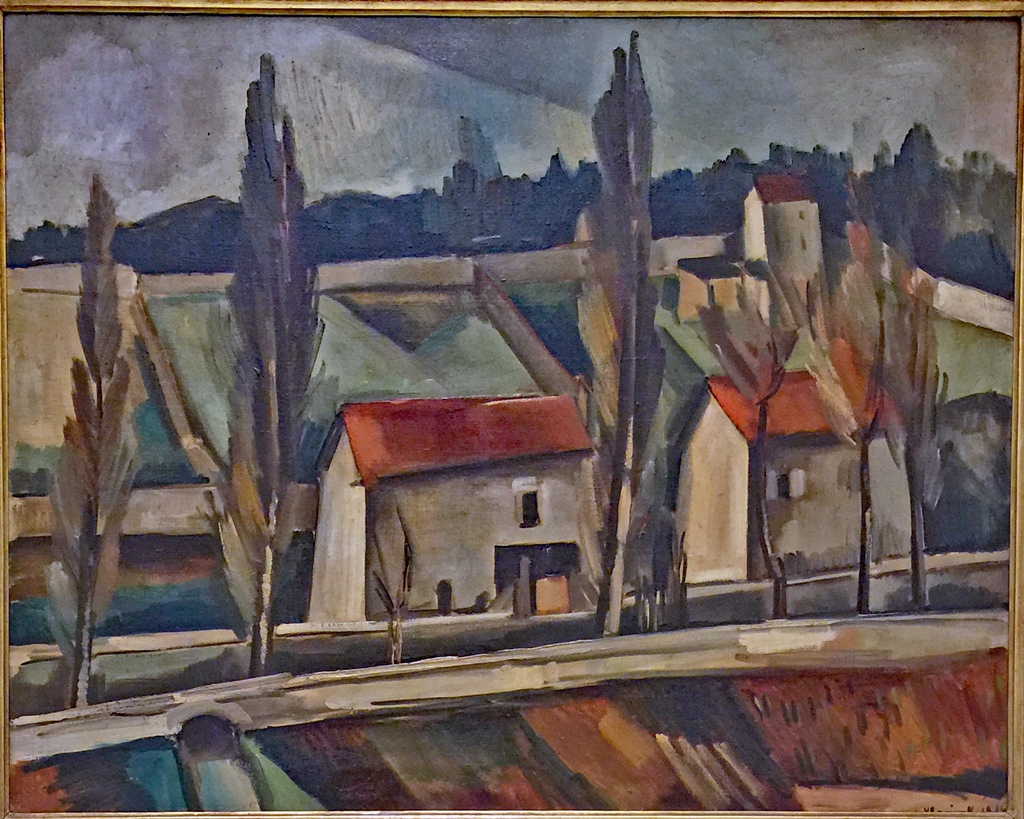
Landscape with Poplars, Maurice de Vlaminck (1914)
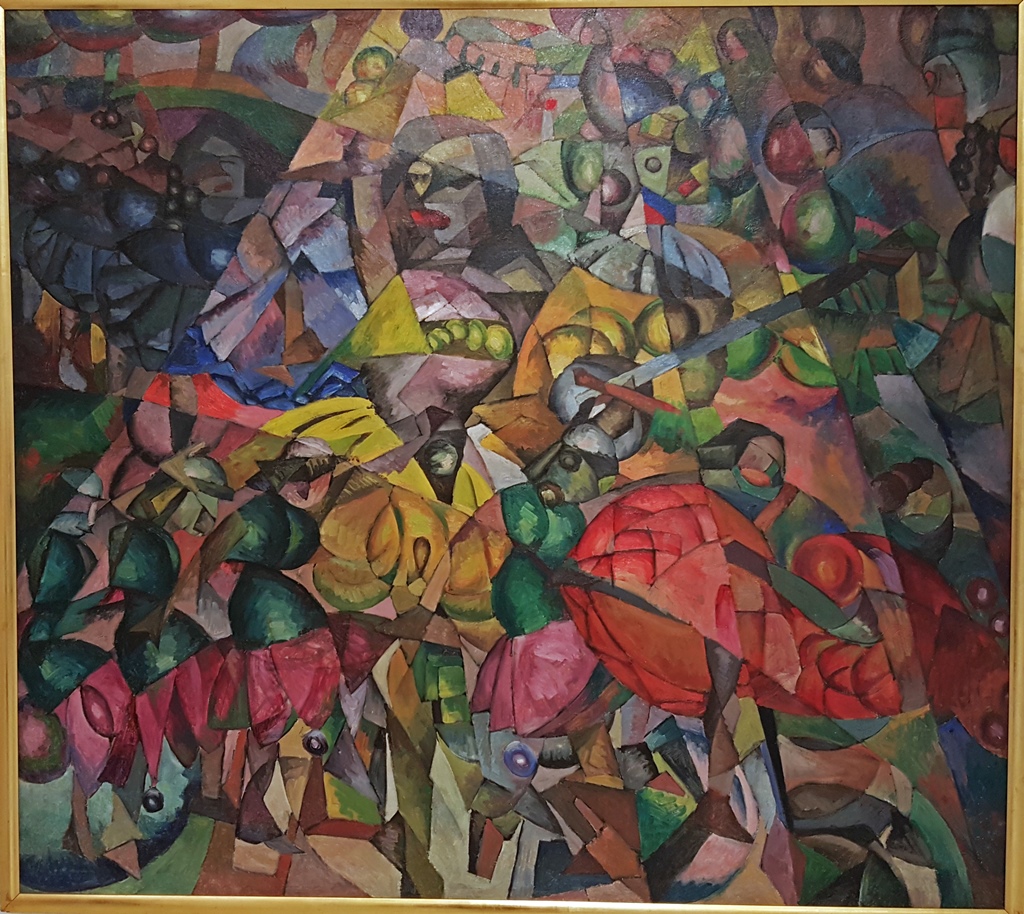
A Ballet Theme, Aristarch Vasiljevic Lentulov (1912)
Faces of the World (partial), Boris Grigoriev (1920-31)
Pablo Picasso was a one-man experimentation machine during this period, and the Veletržní
has a number of his works on display, such as these:
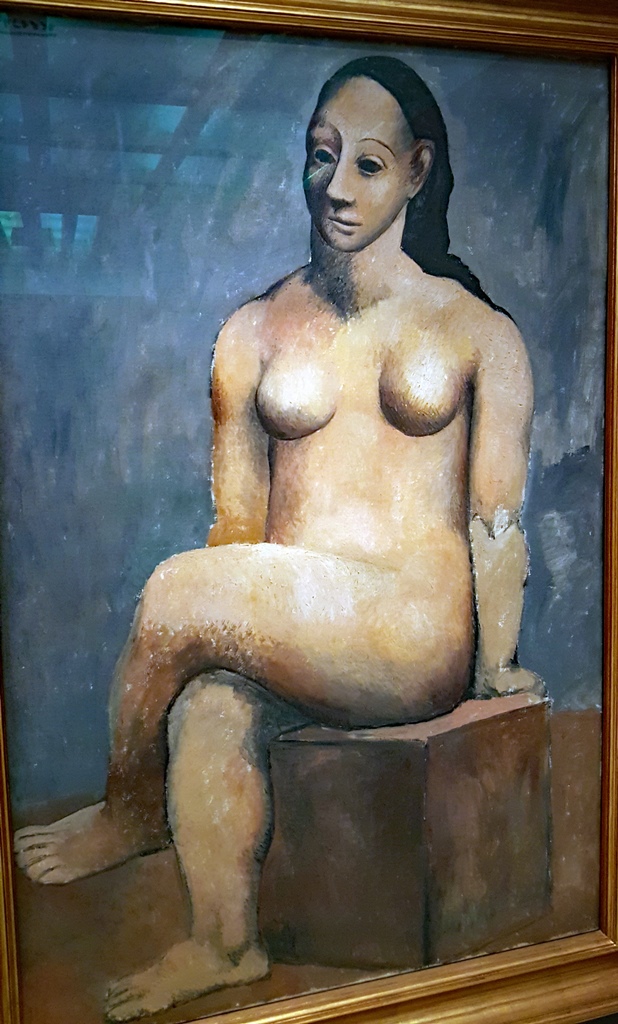
Seated Nude, Pablo Picasso (1906)
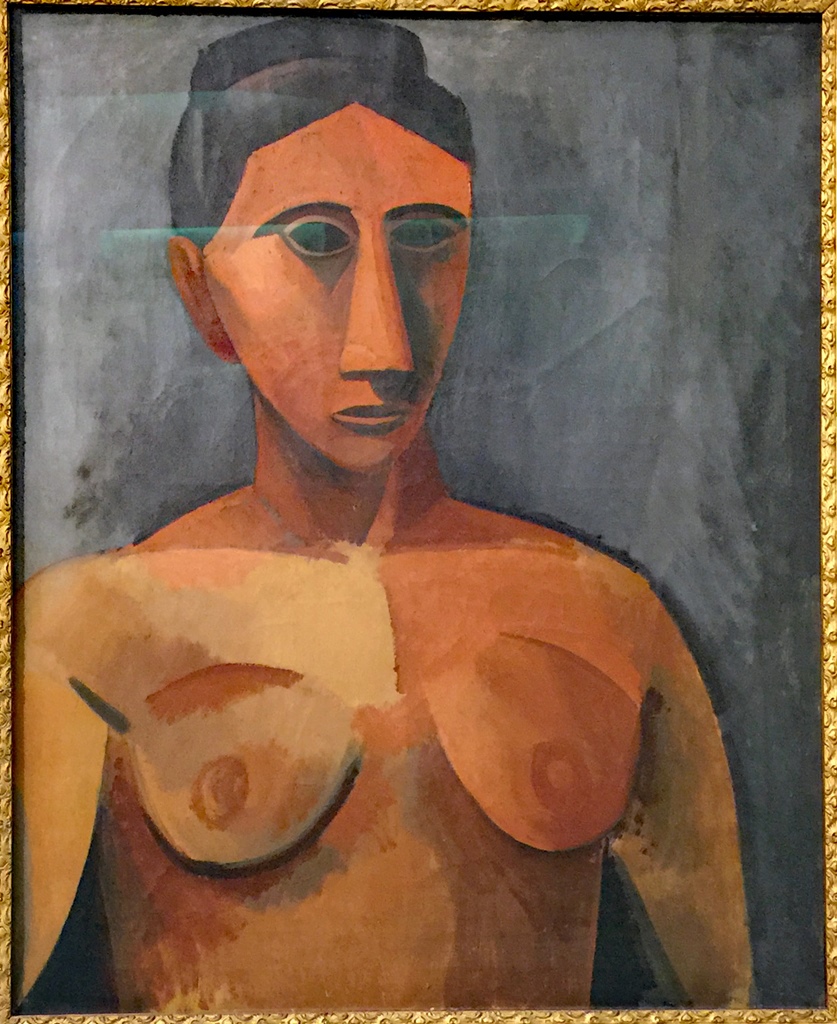
Female Bust, Pablo Picasso (1908)
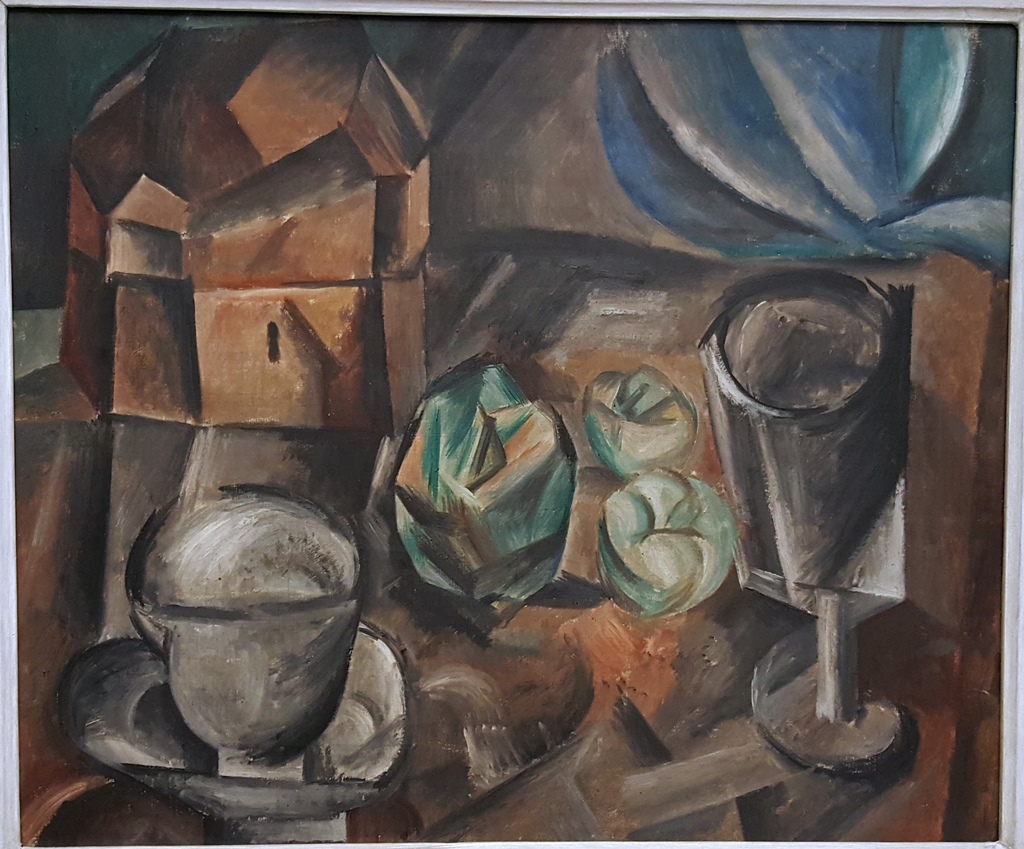
Box, Cup, Apples and Glass, Pablo Picasso (1909)
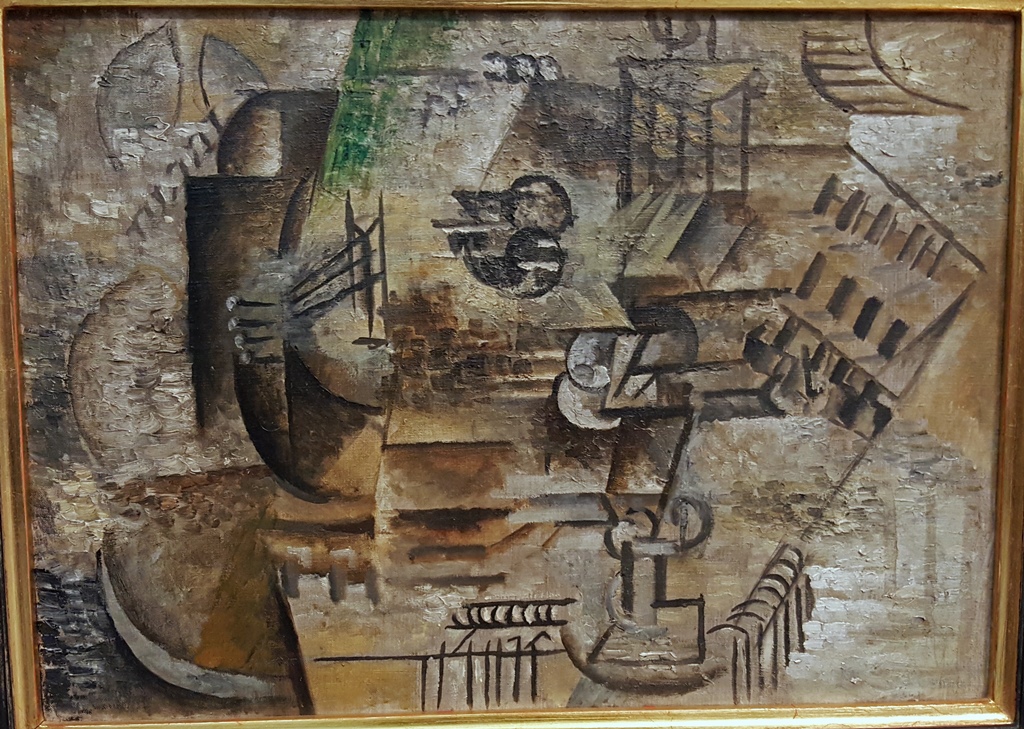
Mandolin and Glass of Pernod, Pablo Picasso (1911)
Standing Woman, Pablo Picasso (1921)
Czech artists and artists from Germany and Austria eventually got involved in things,
making the region a center of Expressionism:
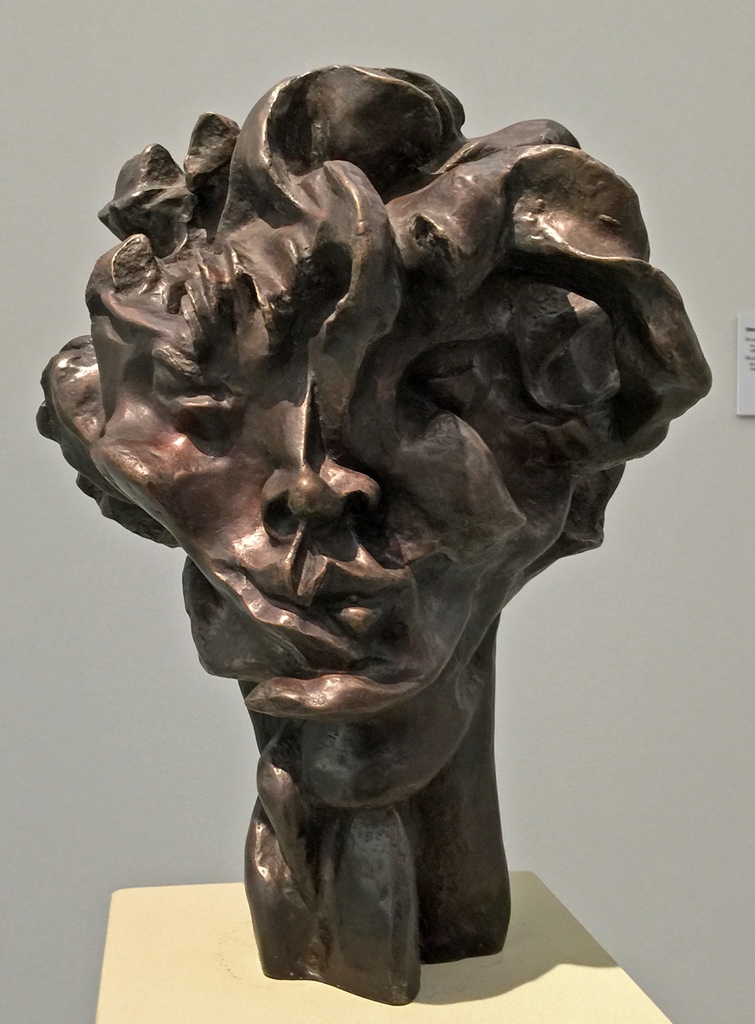
Head of Viki, Otto Gutfreund (1912-13)
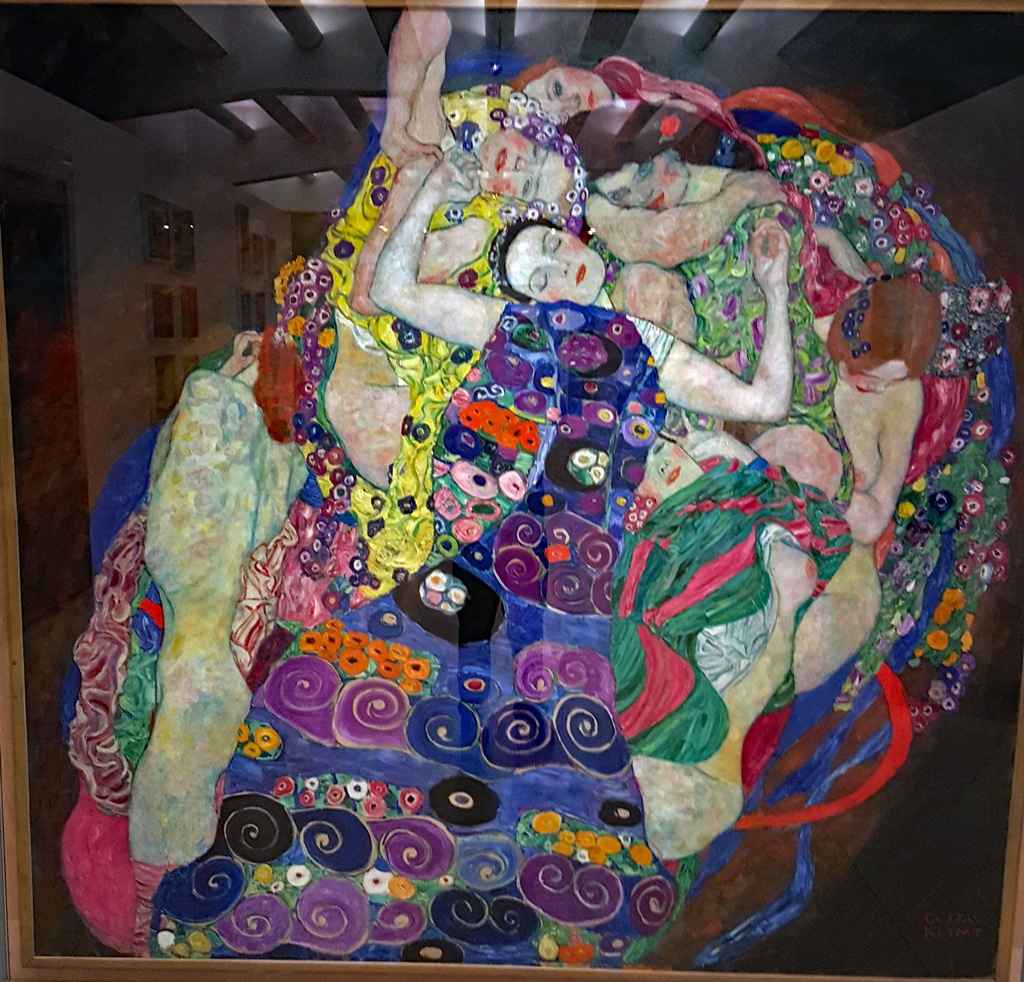
Virgin, Gustav Klimt (1913)
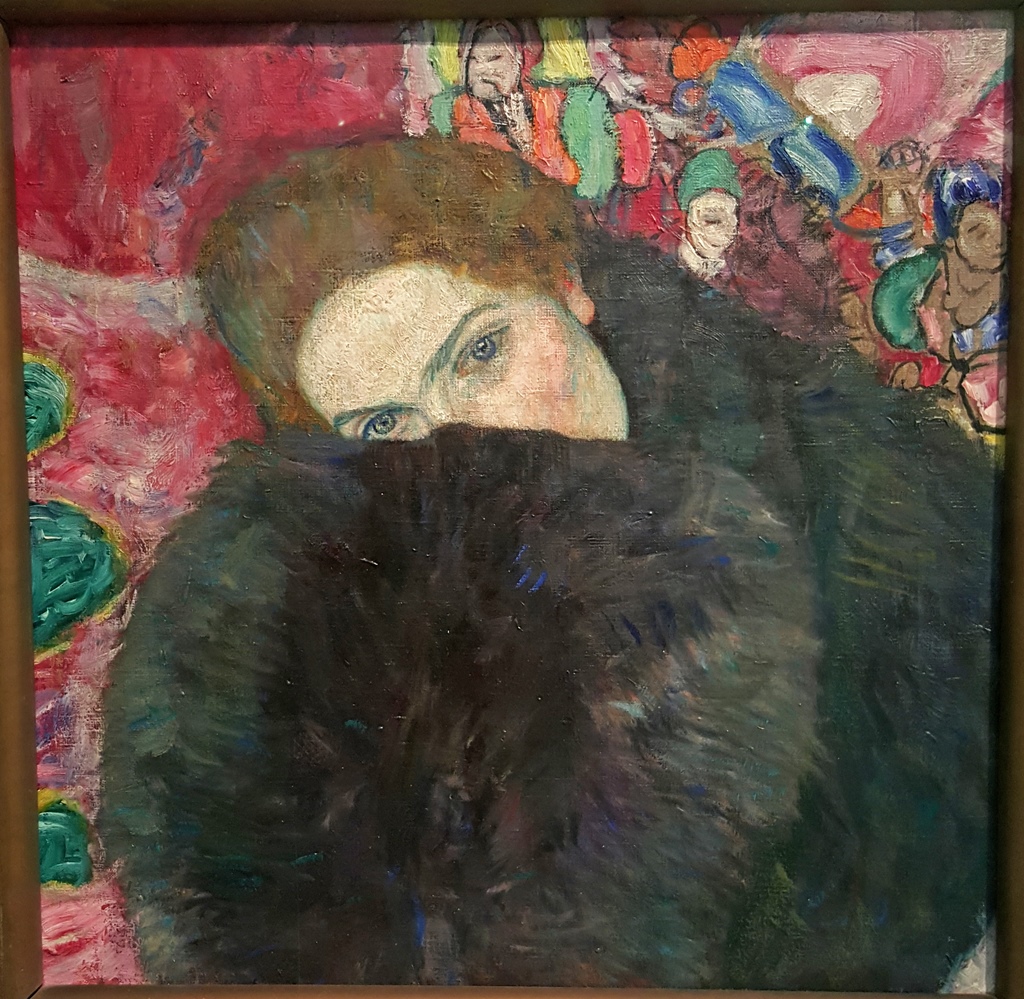
Lady with a Muff, Gustav Klimt (1916-17)
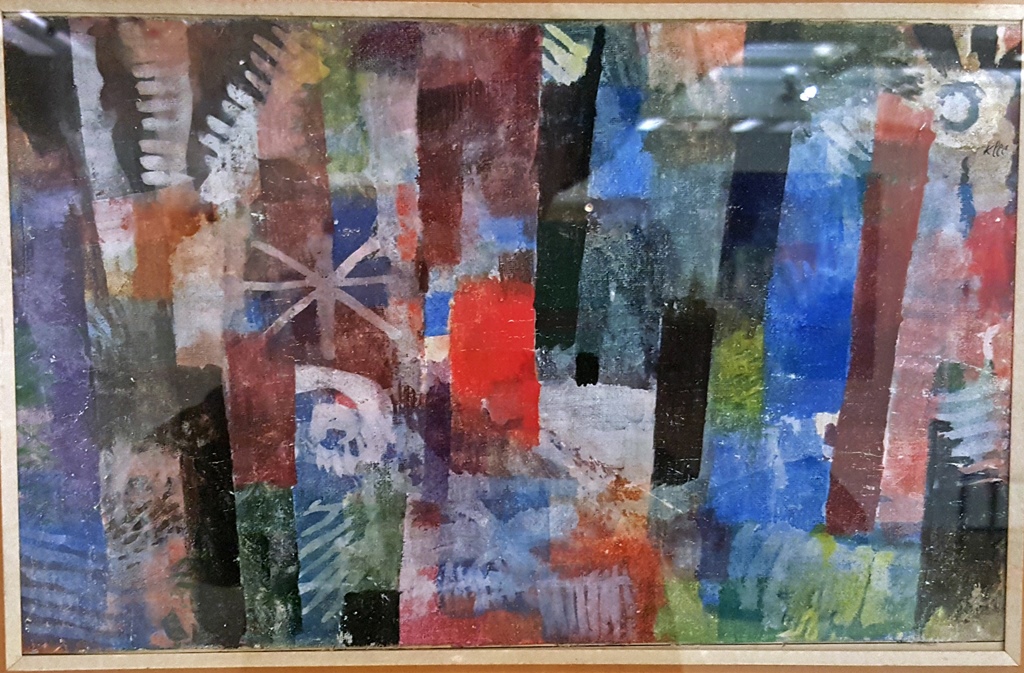
Tropical Forest, Paul Klee (1915)
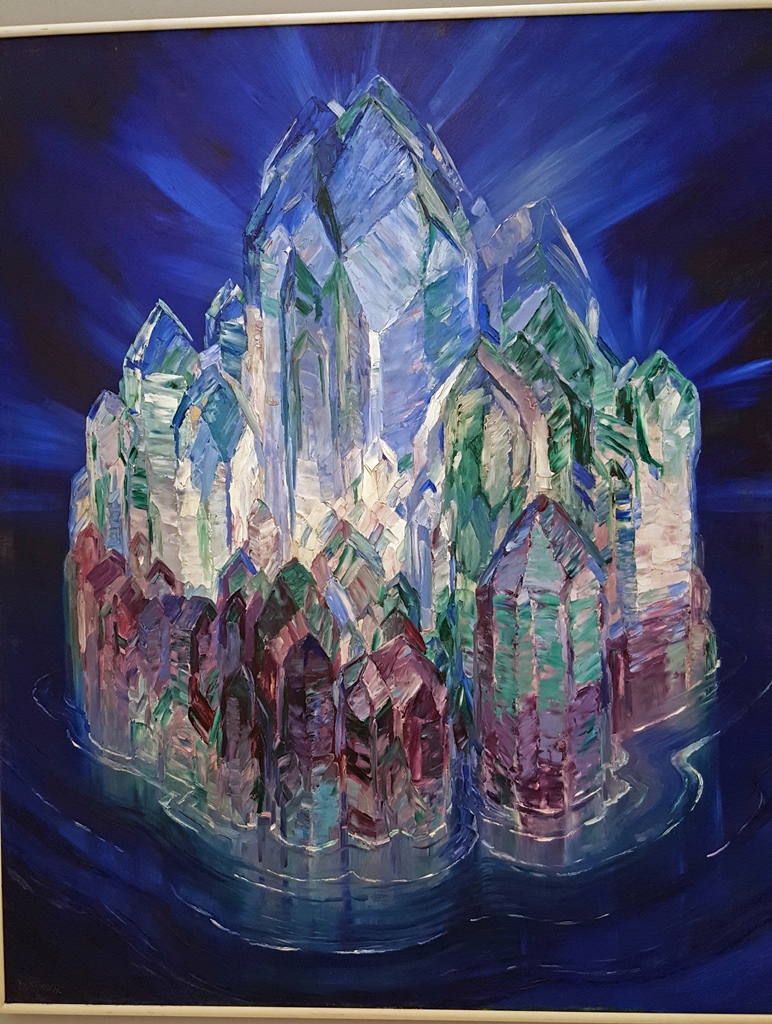
Crystal Castle in the Sea, Wenzel Hablik (1914)
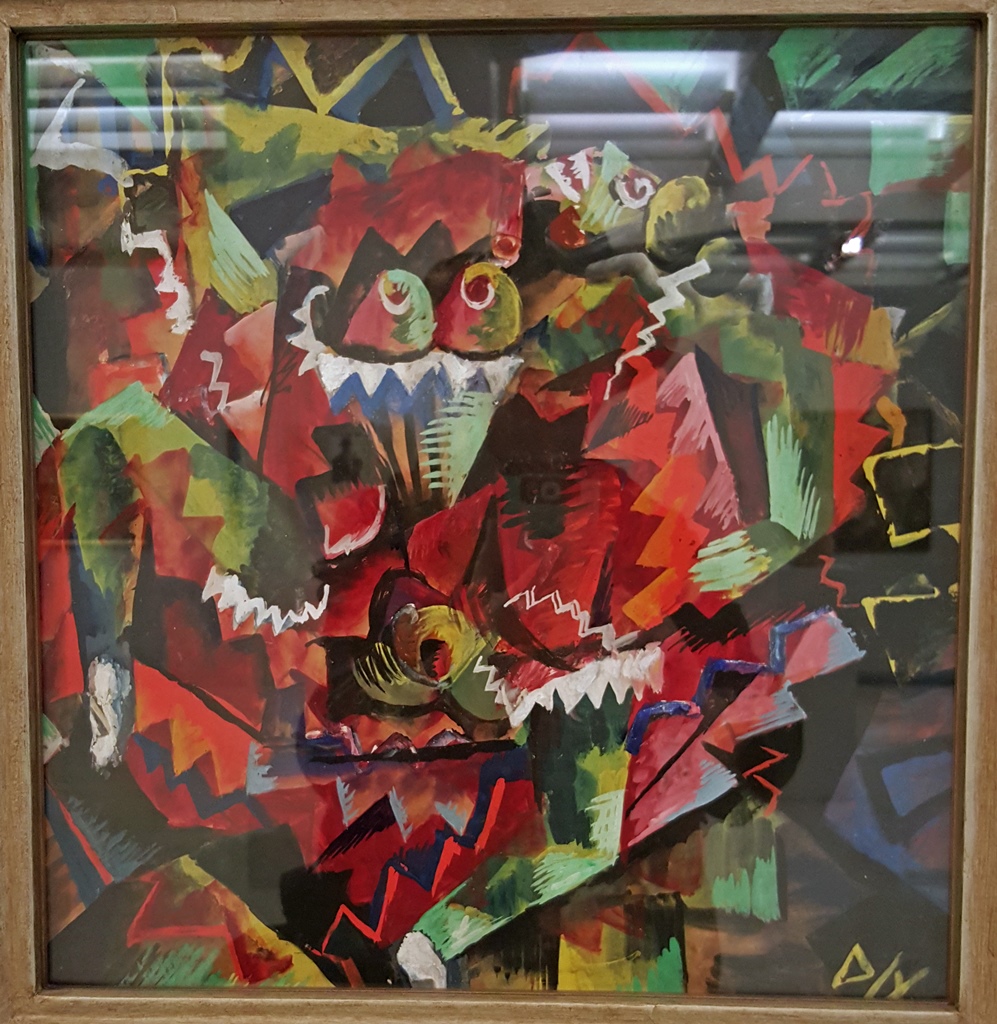
The Dancer (Floozy), Otto Dix (1917-19)
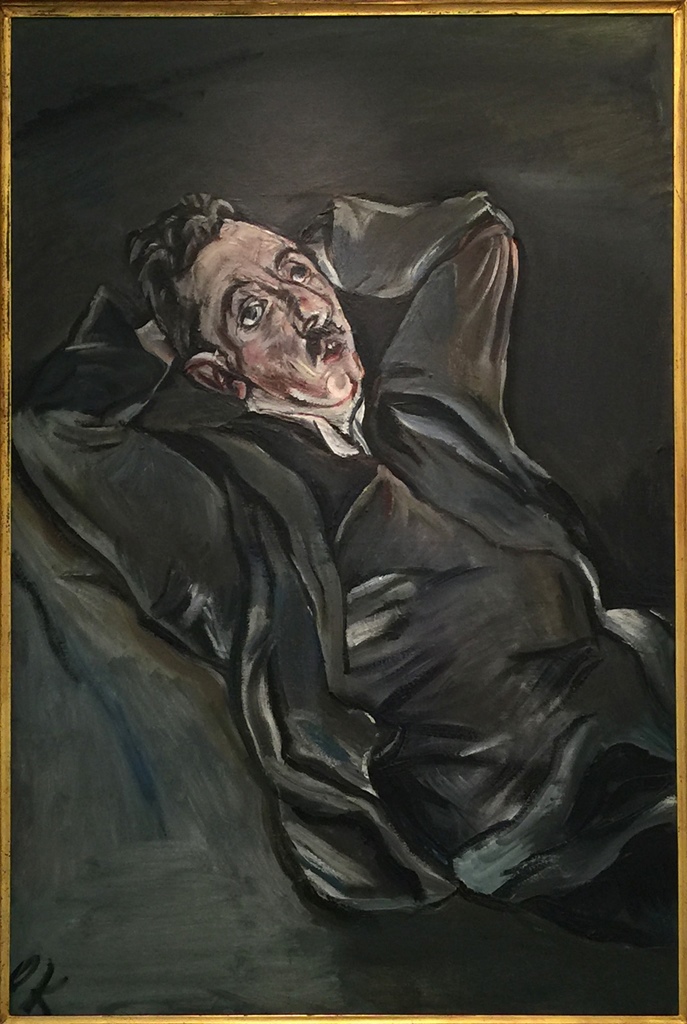
Portrait of the Poet Albert Ehrenstein, Oskar Kokoschka (1914)
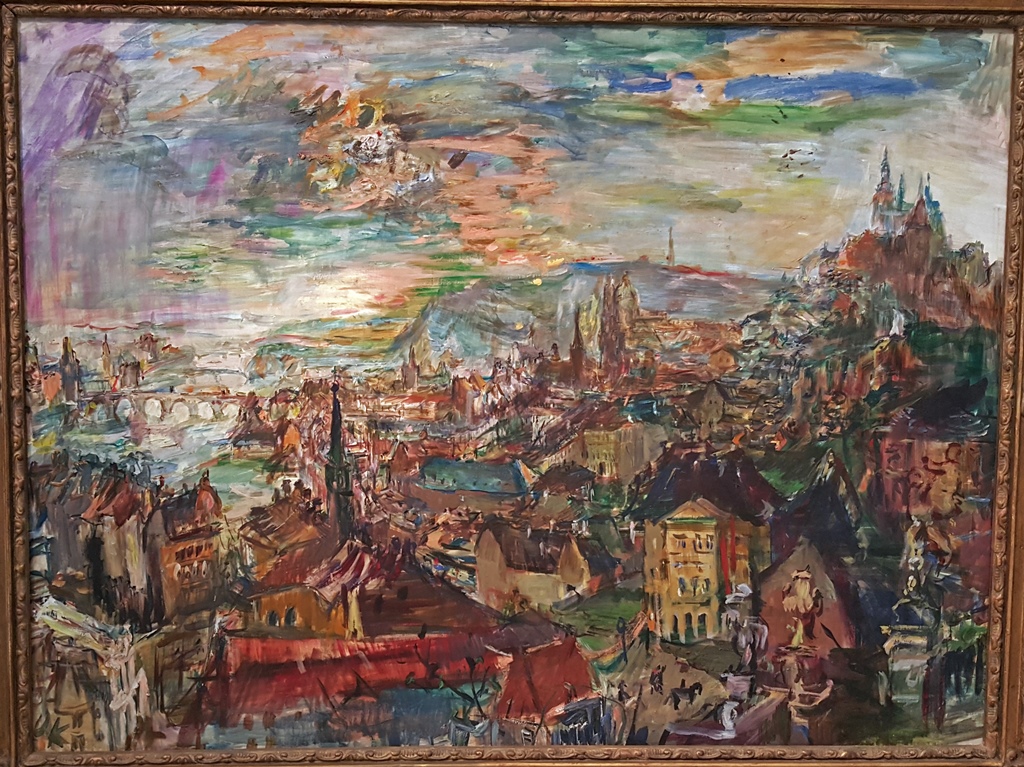
Prague - View from the Villa Kramár, Oskar Kokoschka (1934-35)
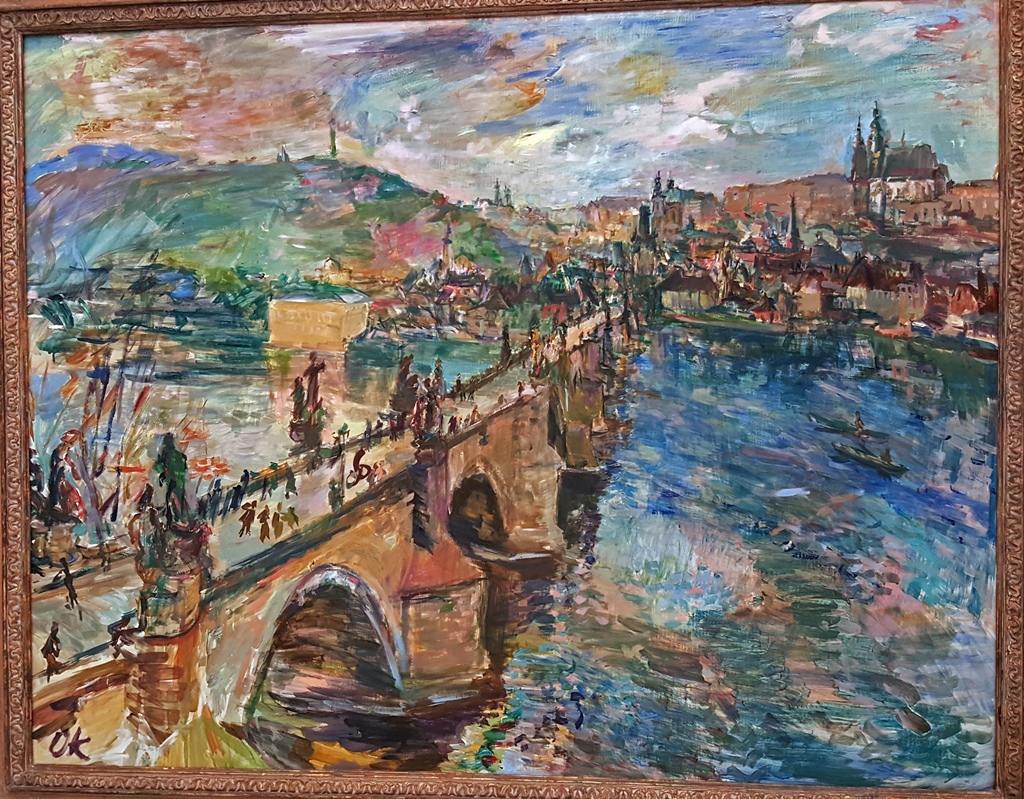
Prague - View of the Charles Bridge, Oskar Kokoschka (1934)
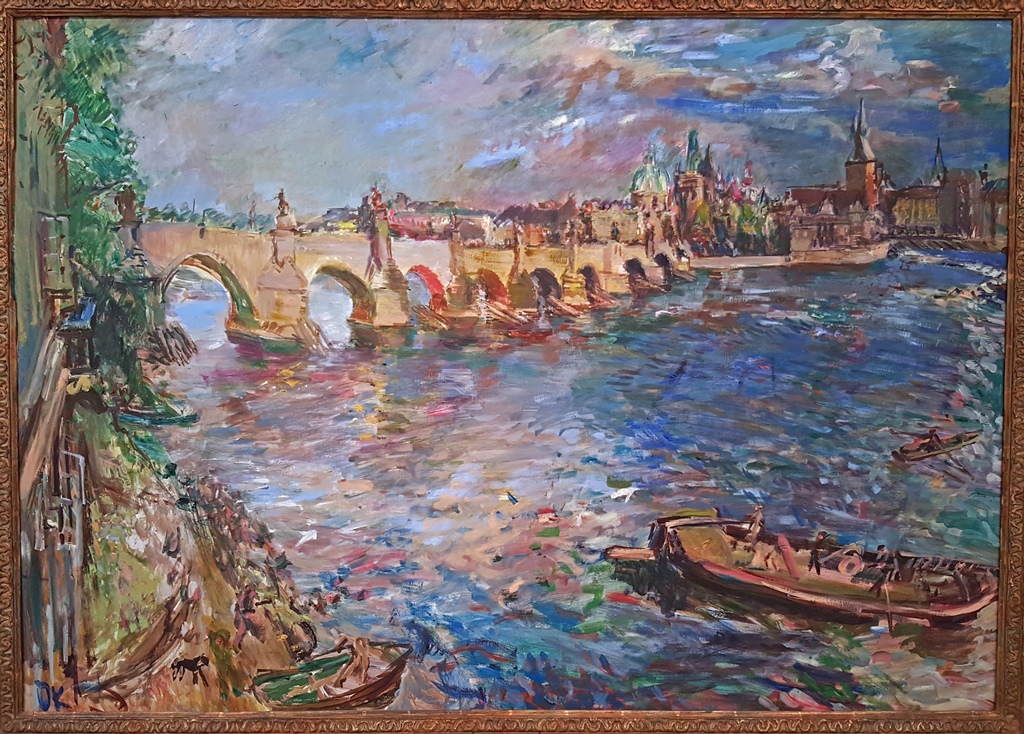
Prague - Charles Bridge, Oskar Kokoschka (1934)
Here are some works produced in the new Czechoslovakia, between the wars:
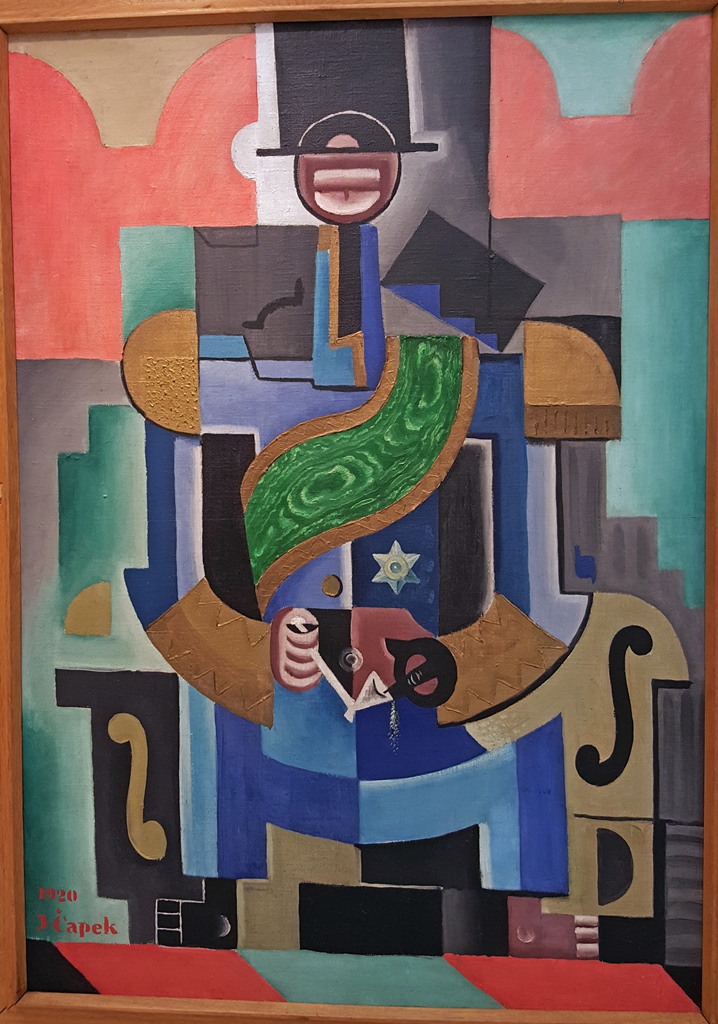
African King, Josef Capek (1920)
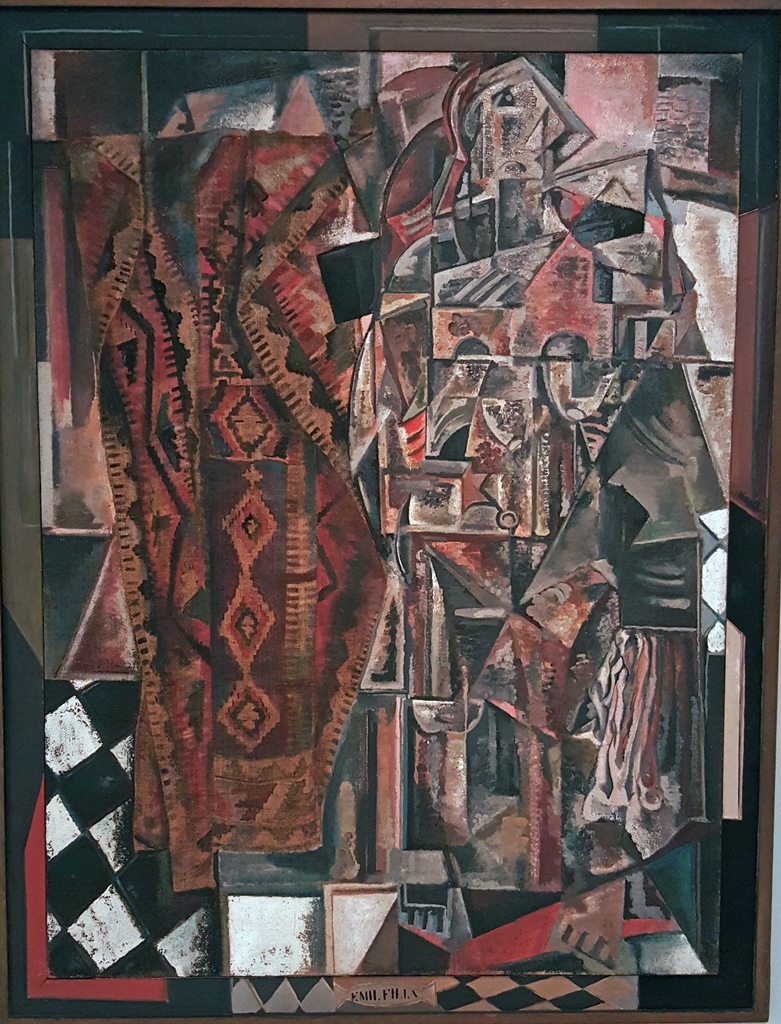
Woman with Carpet, Emil Filla (1921)
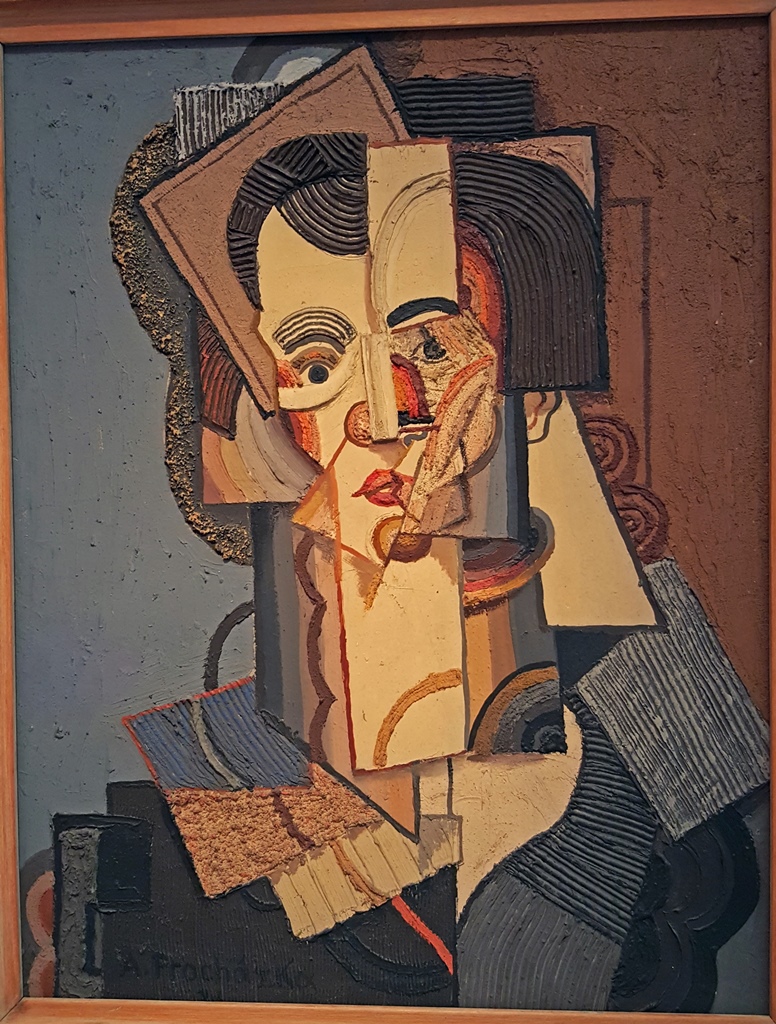
Lady in Sweater, Antonín Procházka (1921)
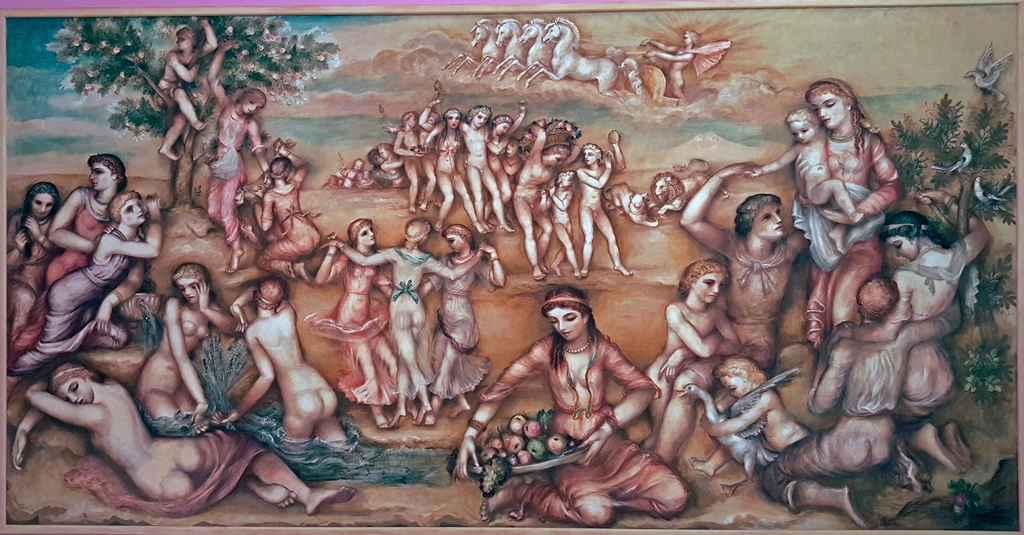
Golden Age, Antonín Procházka (1938)
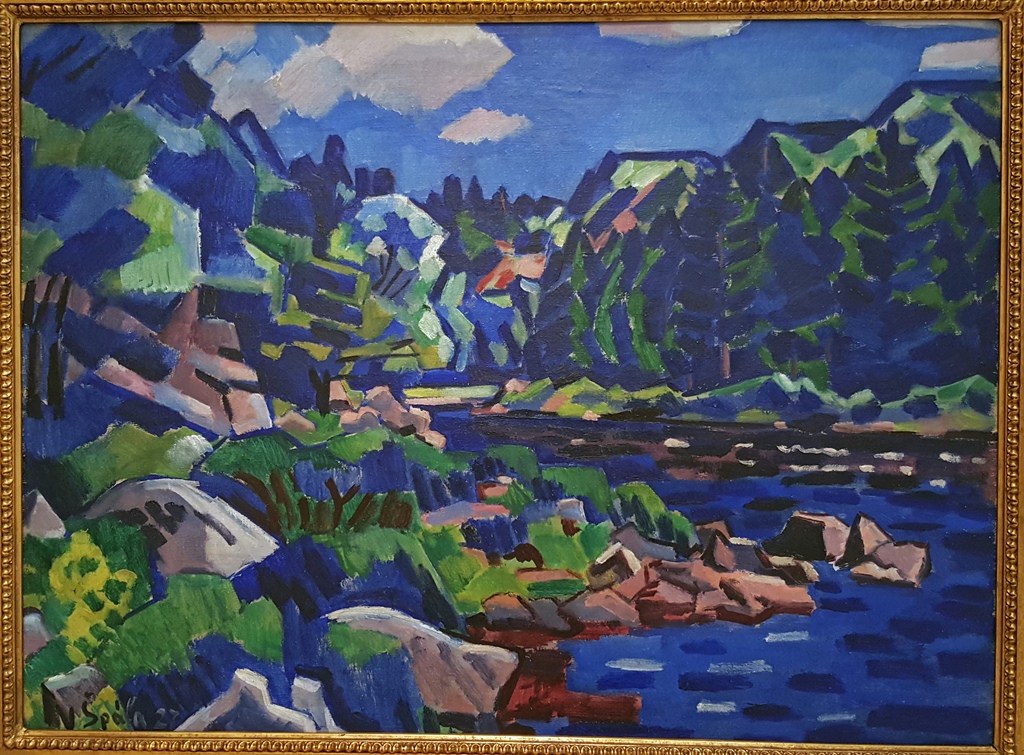
The Vltava River near Cervená, Václav Špála (1927)
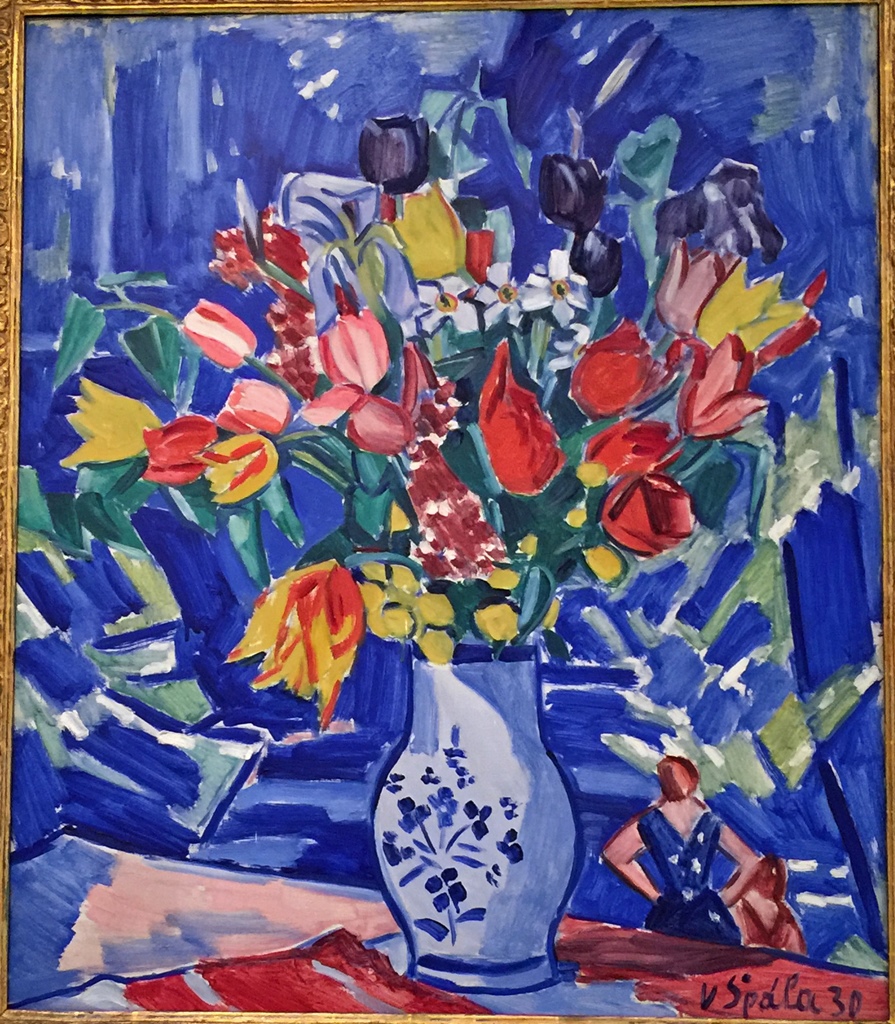
Bouquet with Figures in the Background, Václav Špála (1930)
And here are some of the later works to be found in the museum, from shortly before and
shortly after World War II:
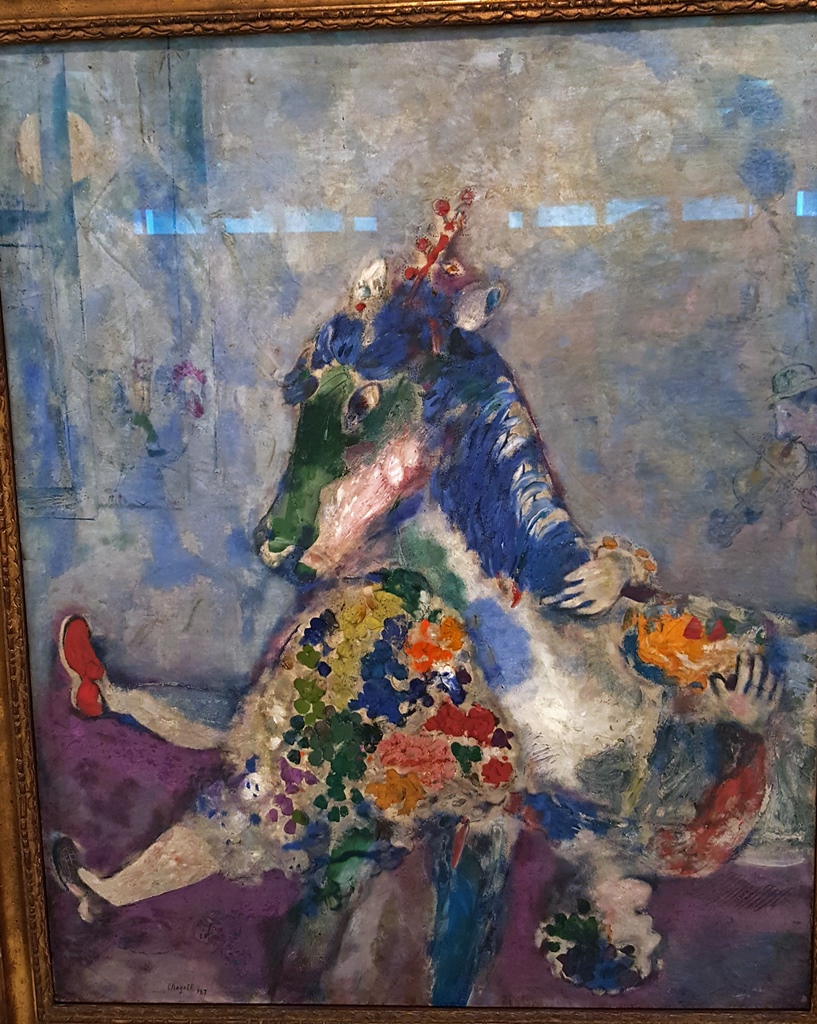
At the Circus, Marc Chagall (1927)
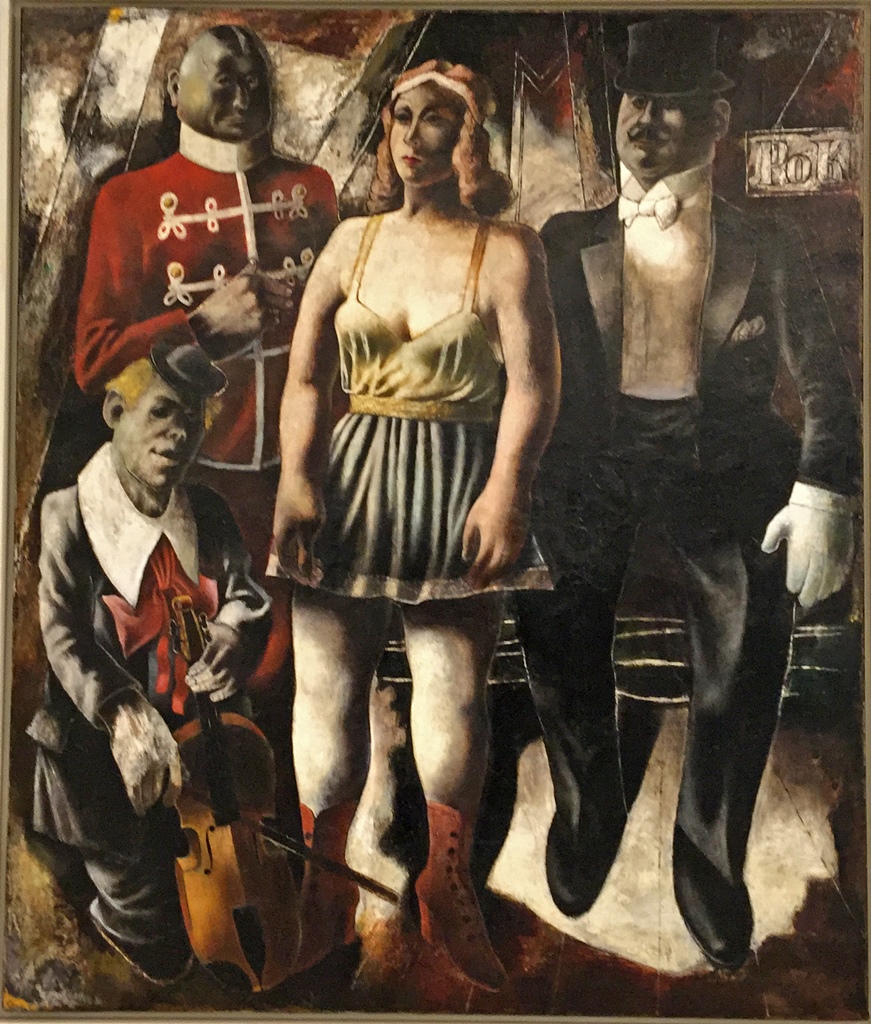
Circus, Georg Grosz (1930)
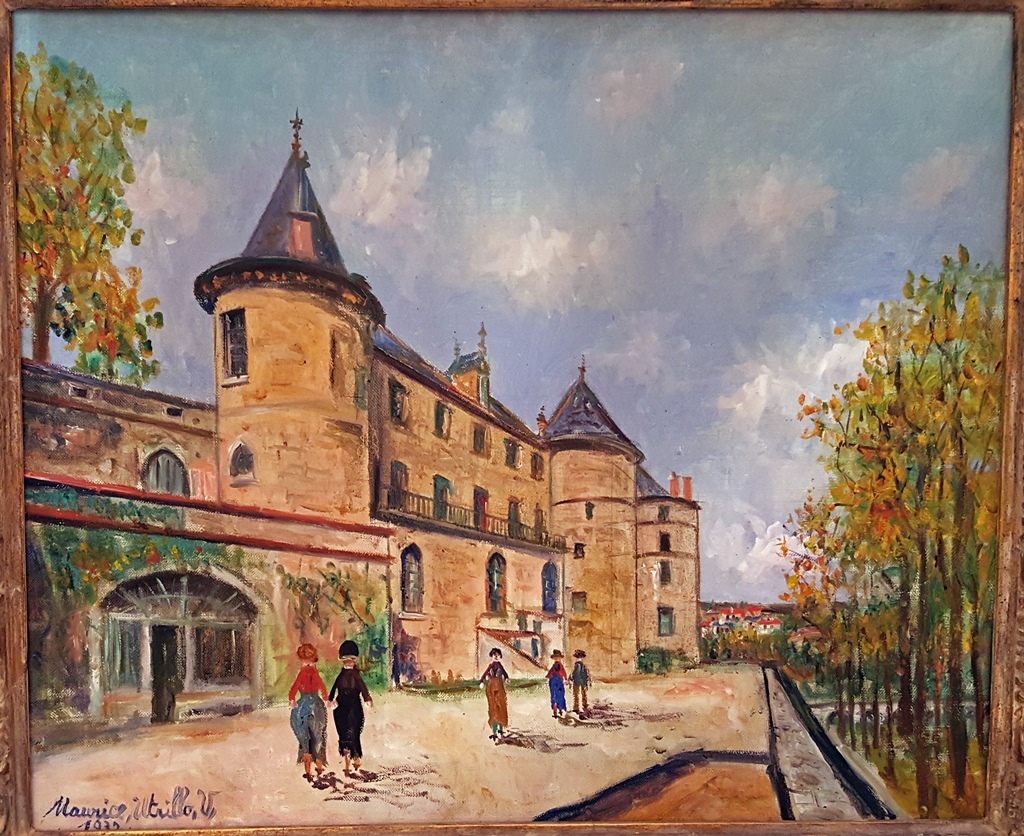
Chastellux Chateau, Maurice Utrillo (1932)
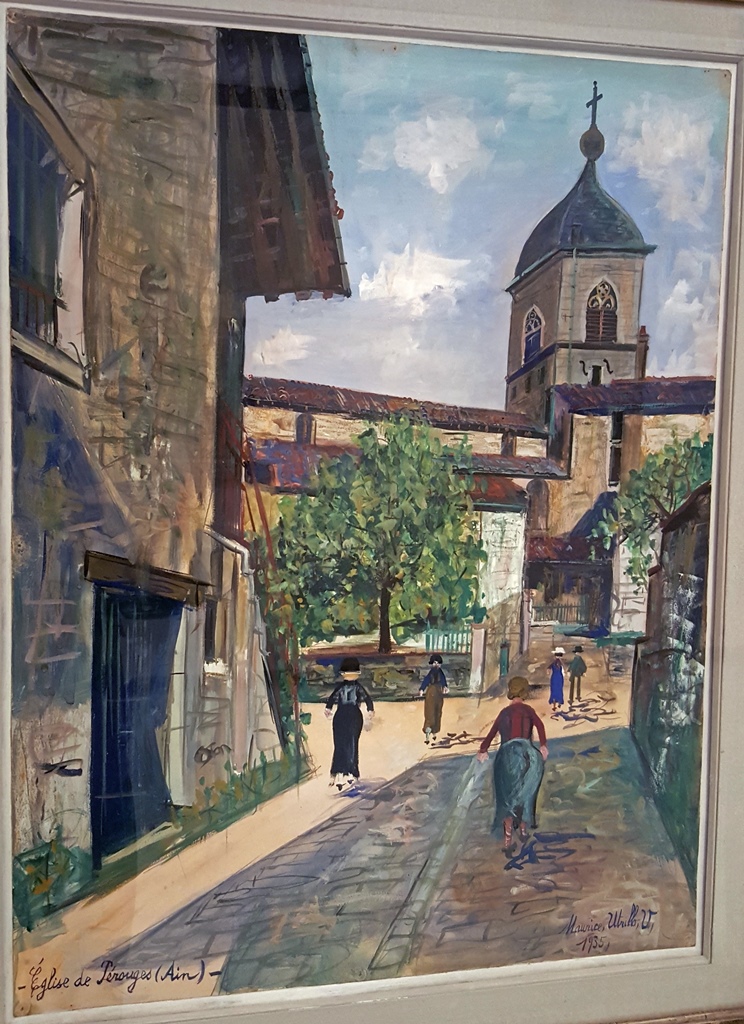
Church in Pérouges, Maurice Utrillo (1935)
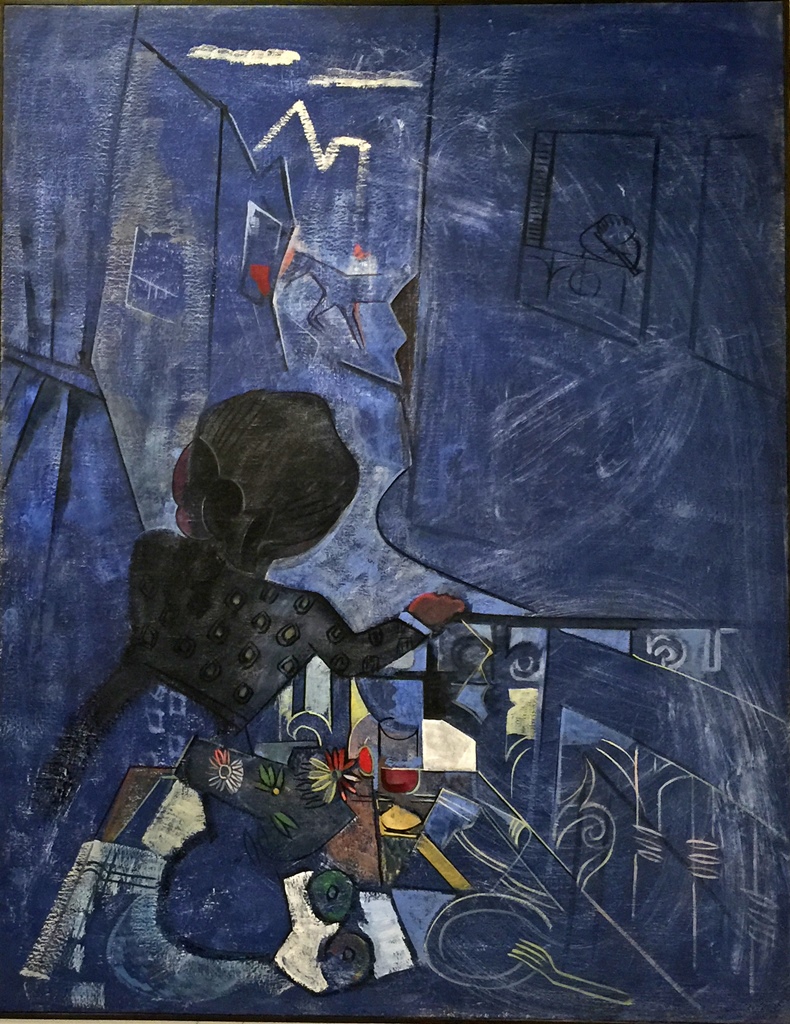
Spain 1937, Francisco Borés (1937)
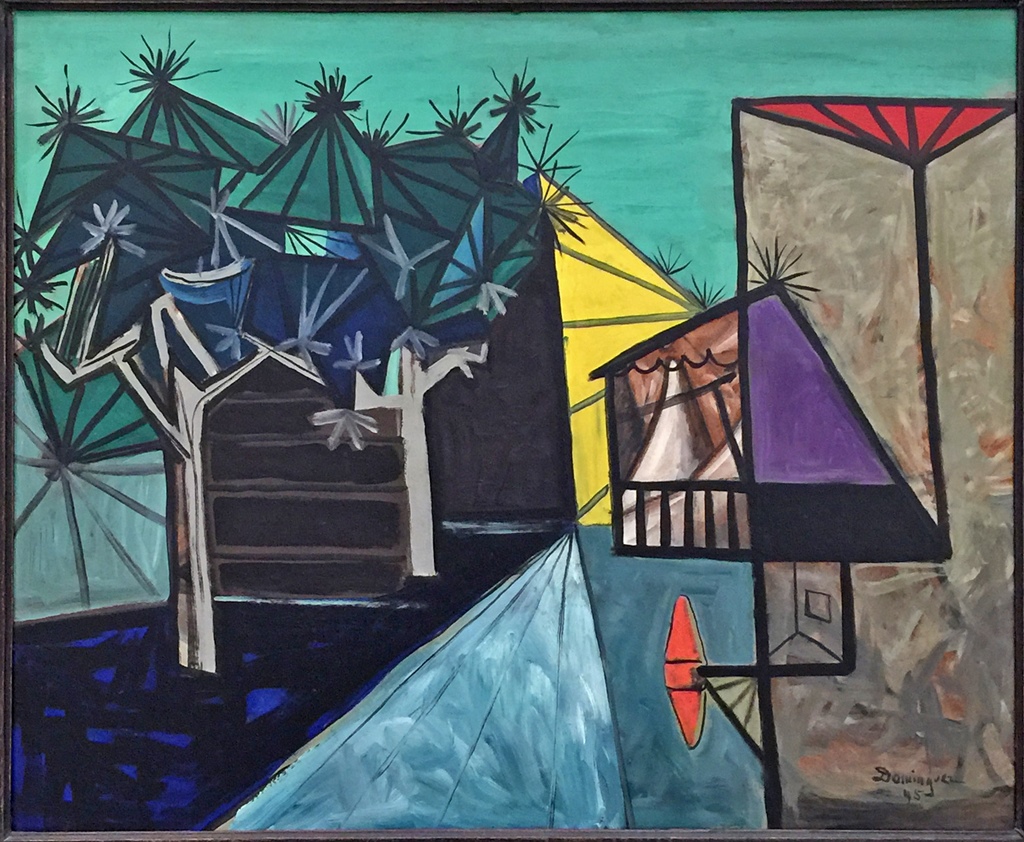
Landscape with Trees, Óscar Domínguez (1945)
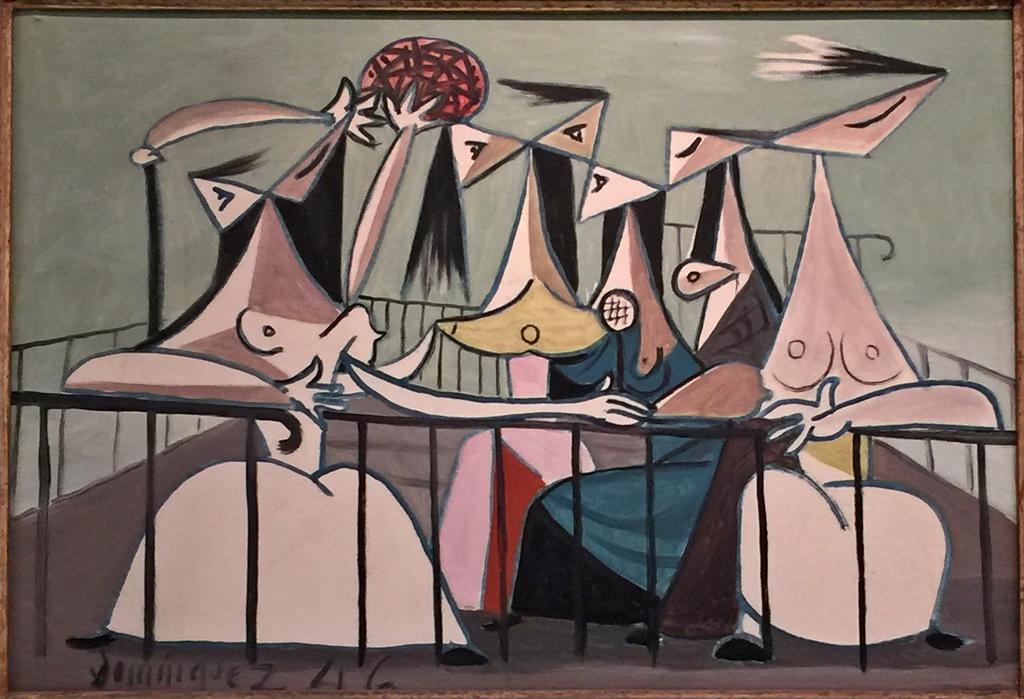
Women on Balcony, Óscar Domínguez (1946)
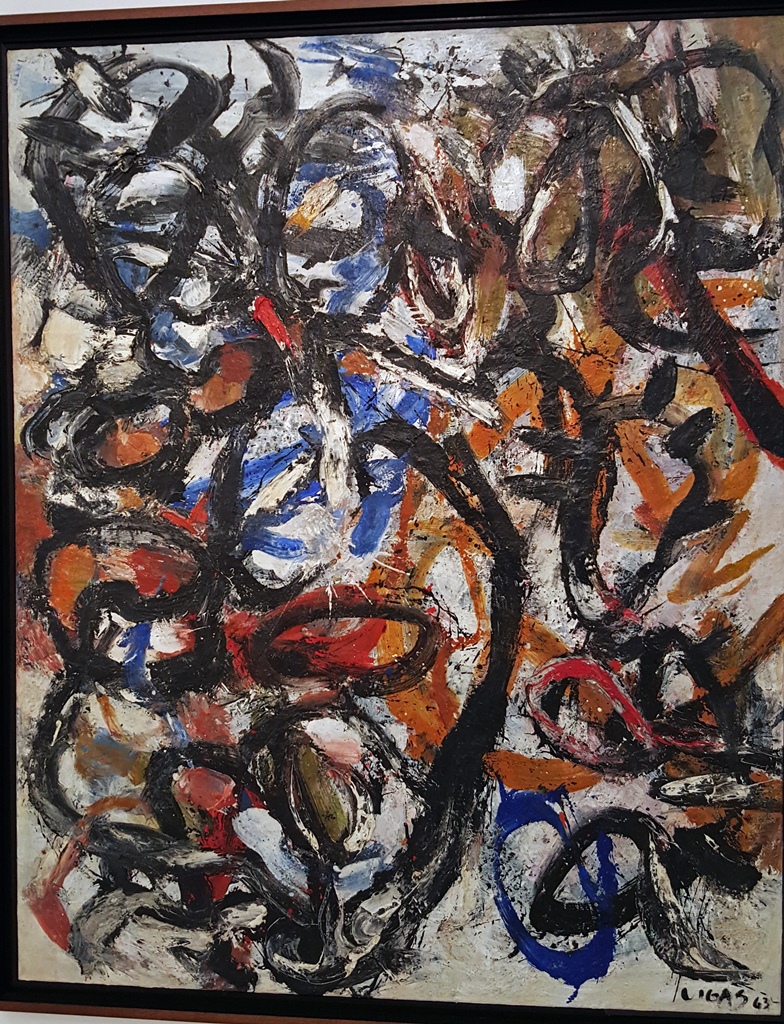
Primeval Forest II, Osvaldo Vigas (1963)
By this time, the day had been a pretty full one, and we were ready to return to our
hotel. Also, we had things to do. Like packing – this was our last full day in Prague,
and we needed to prepare for travelling to our next destination. It would be time to
take our leave of Prague and to move on to our next port of call: the land of lingonberries
and herring, the home of meatballs and do-it-yourself furniture – glorious Sweden, and its
capital, Stockholm.

